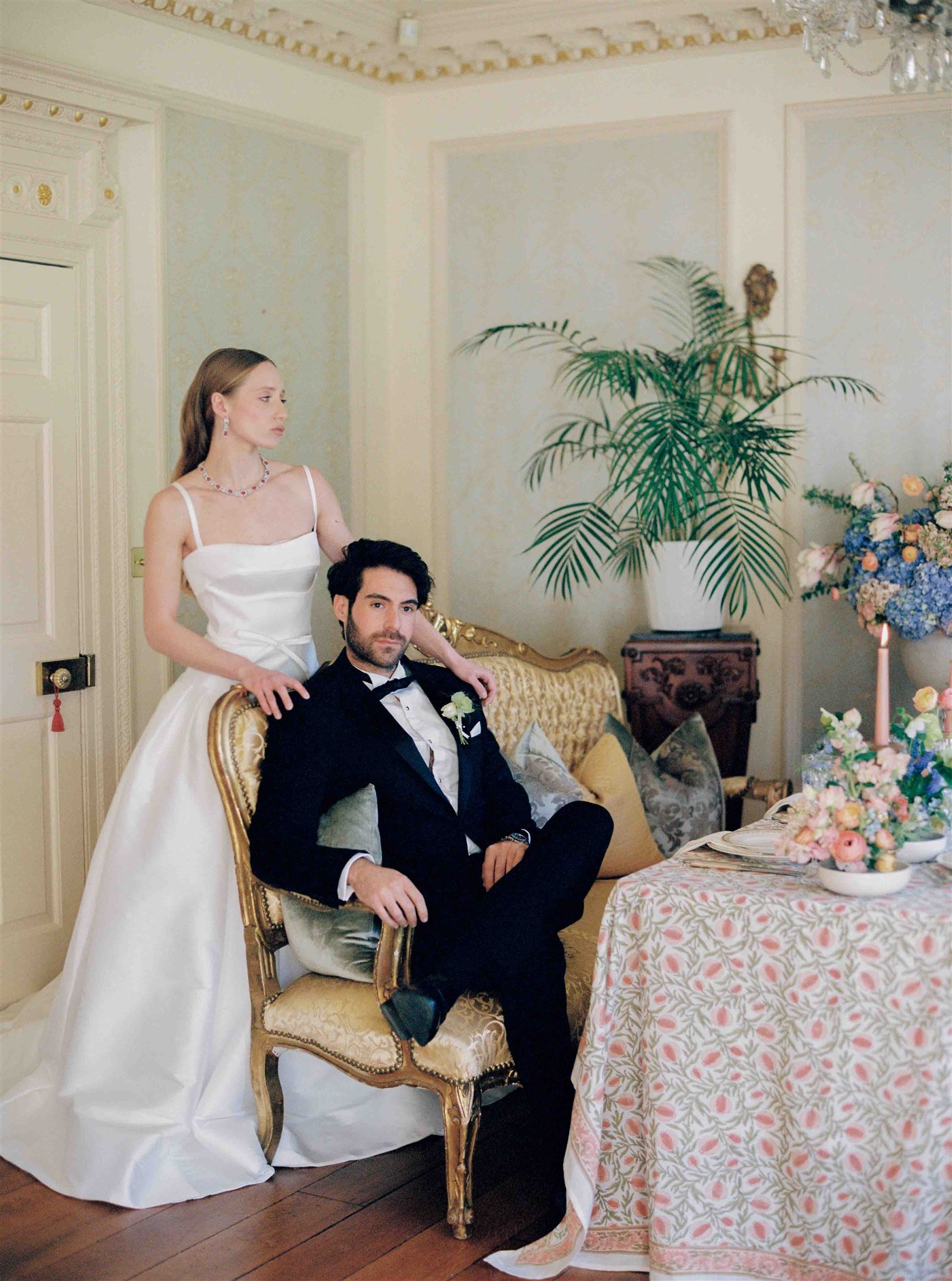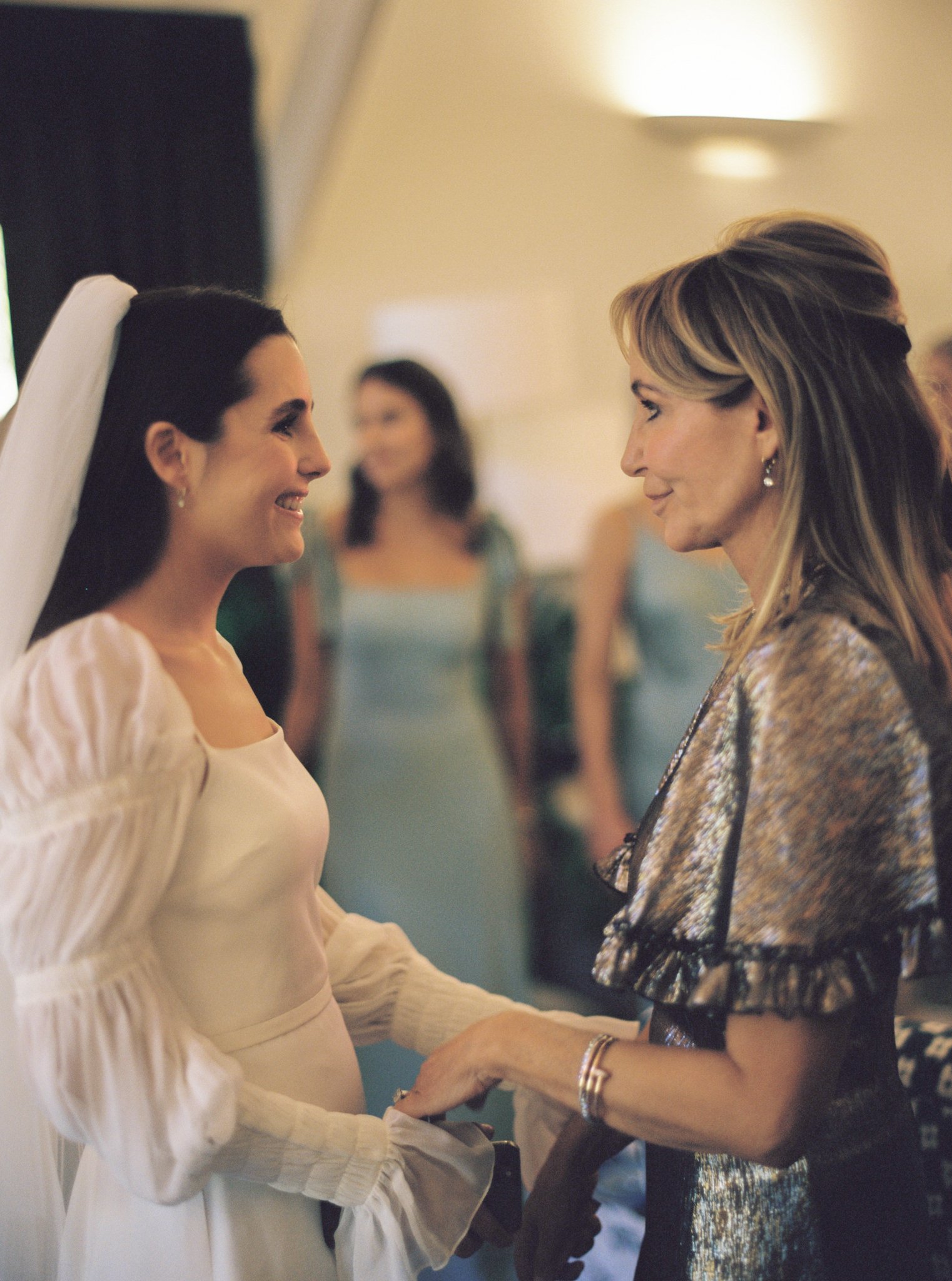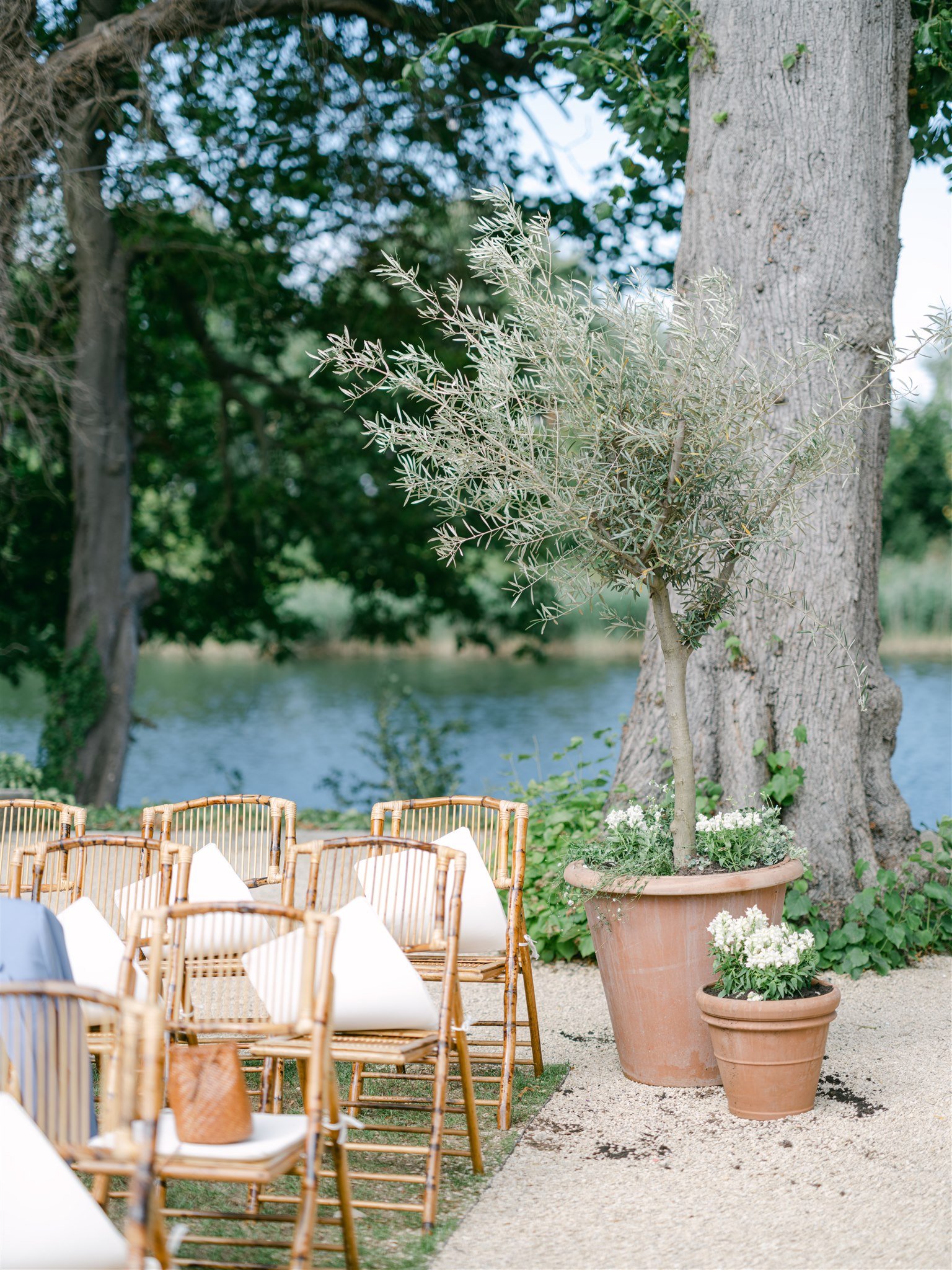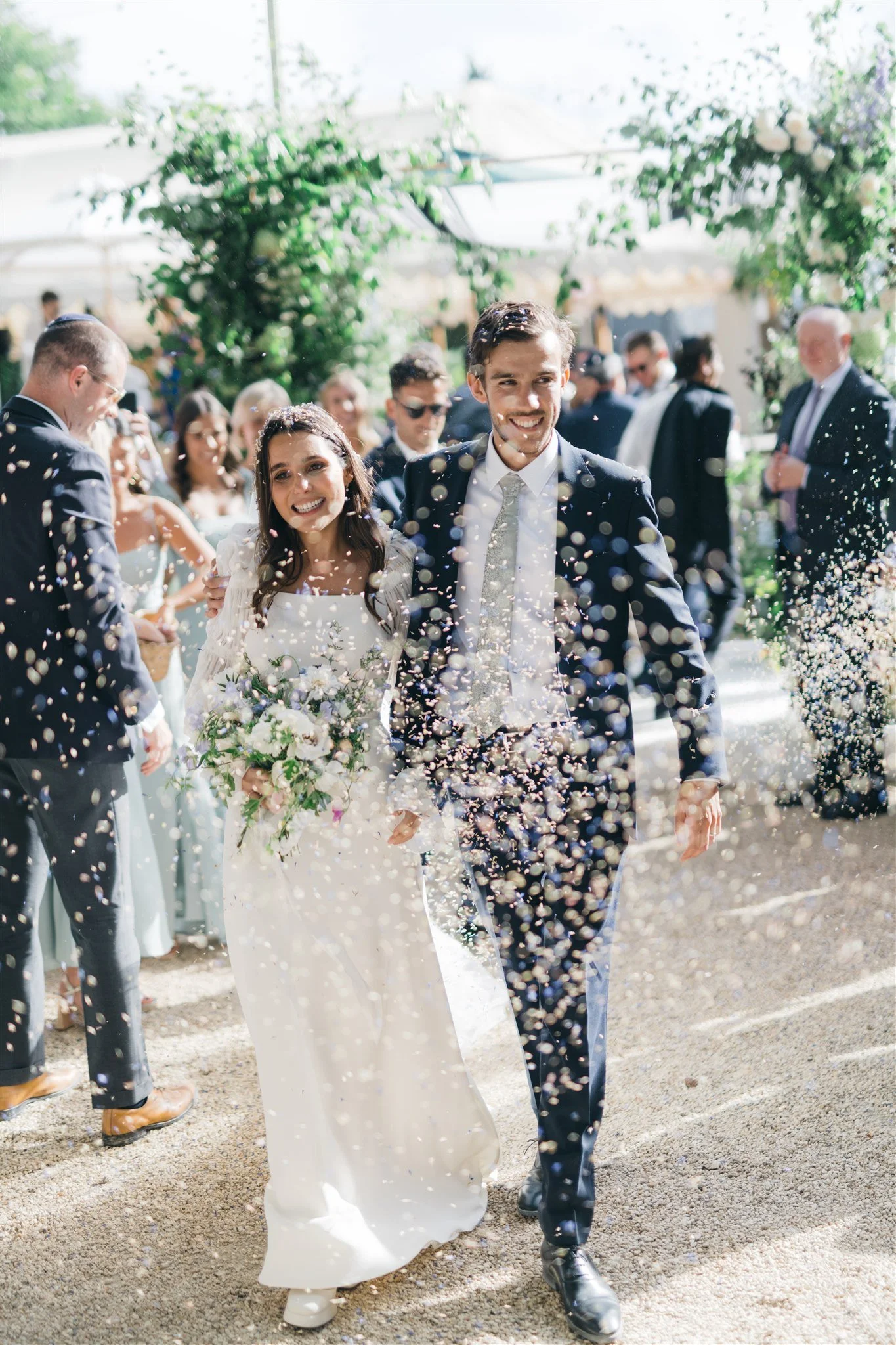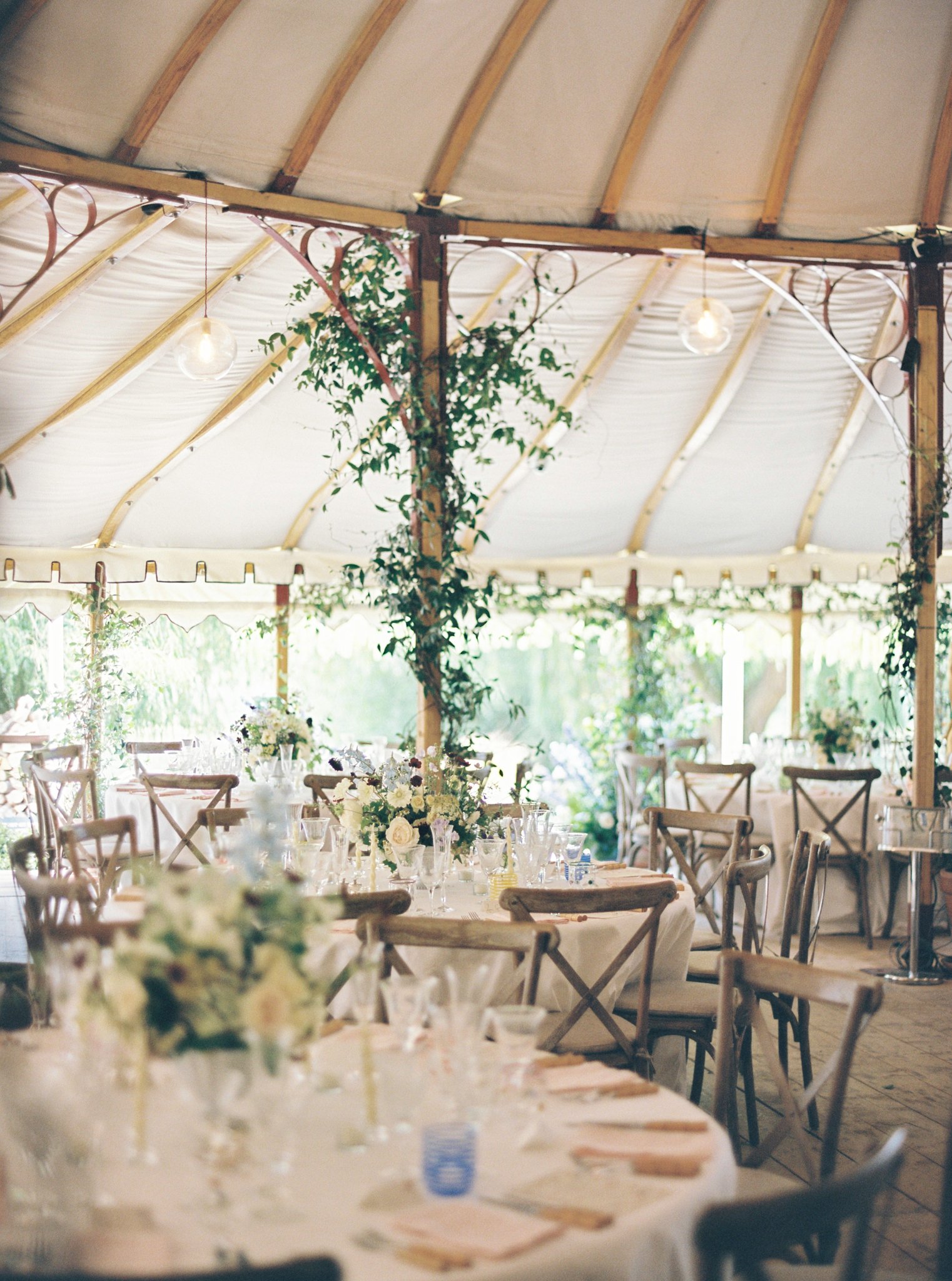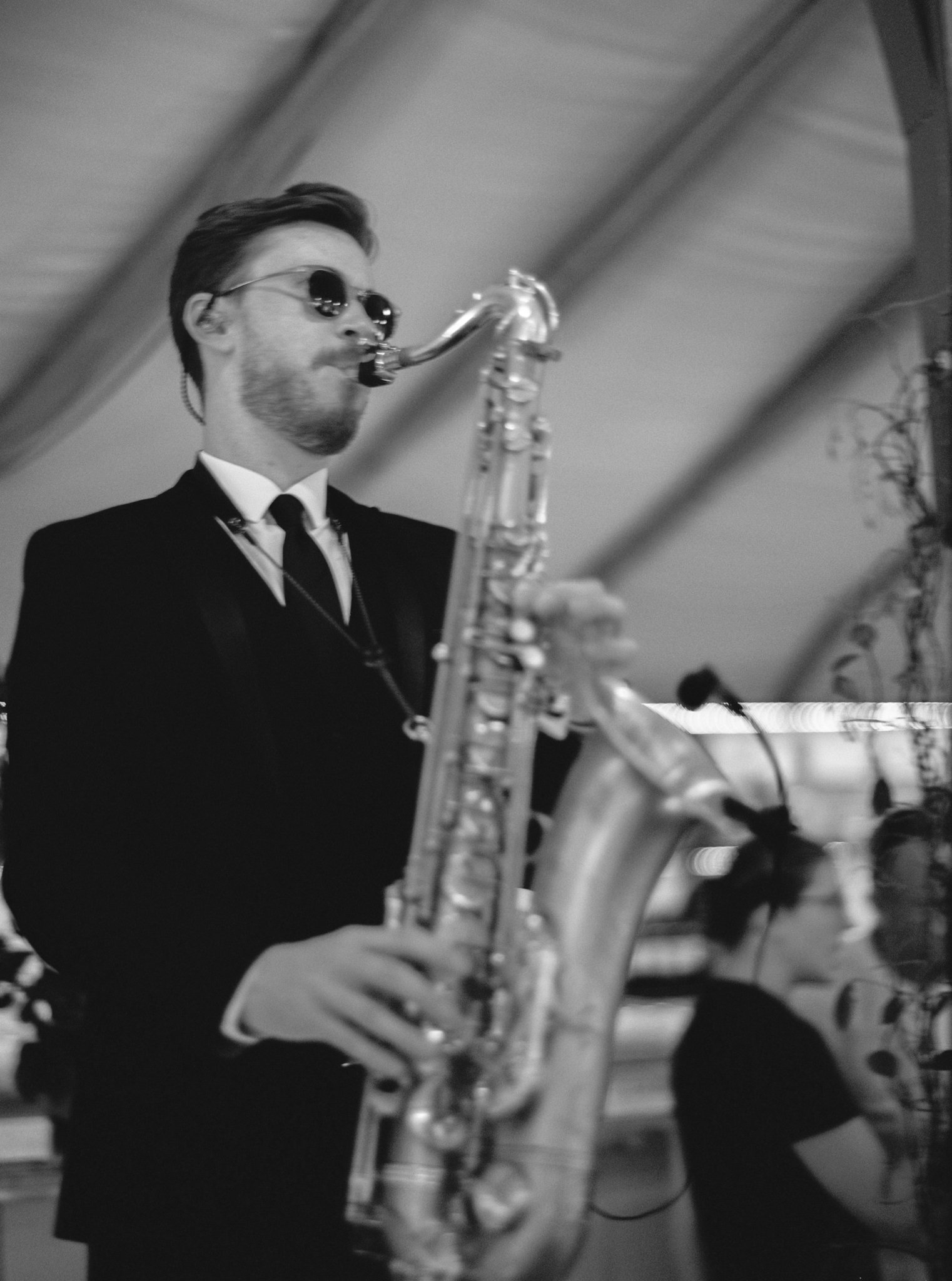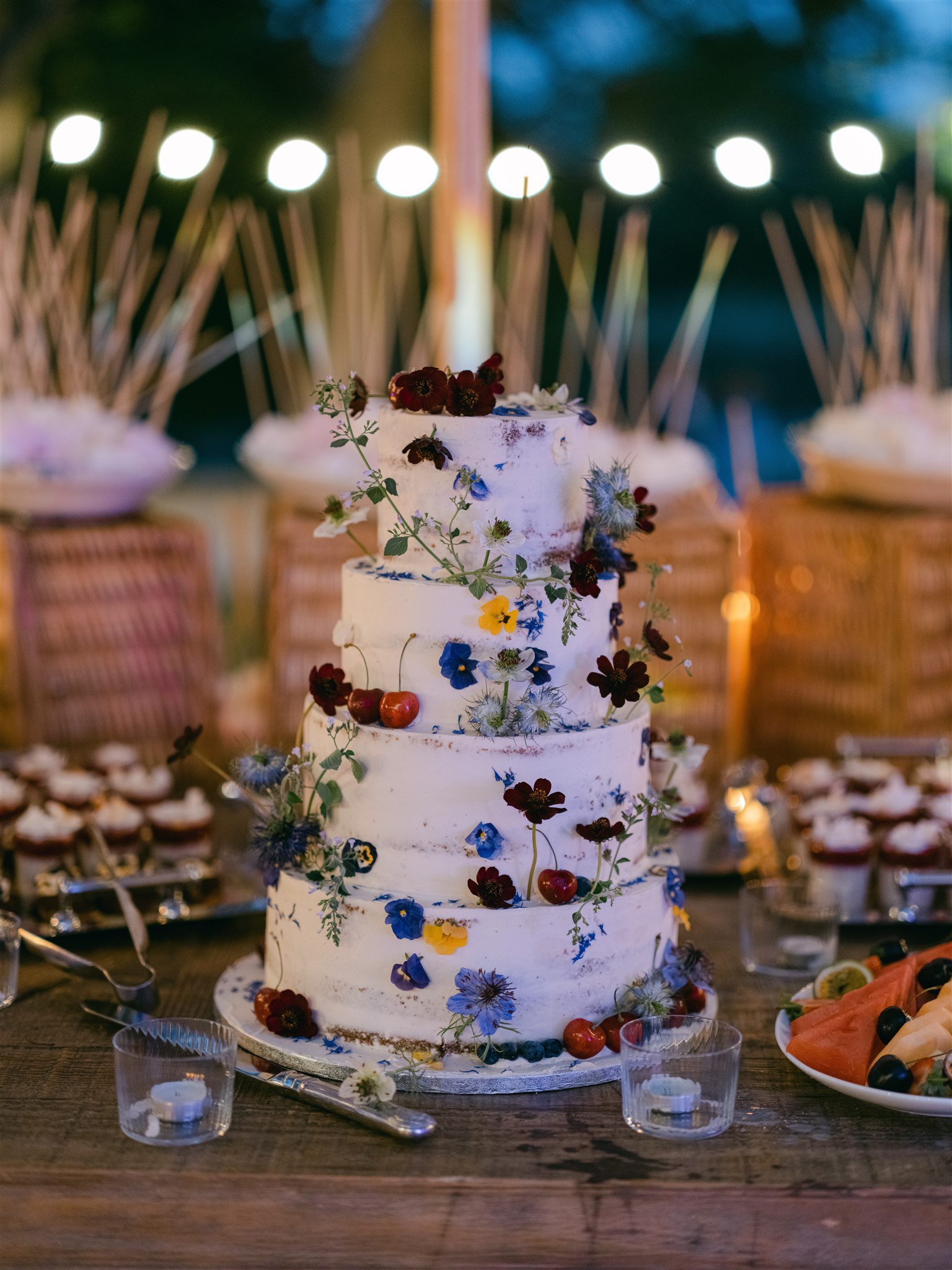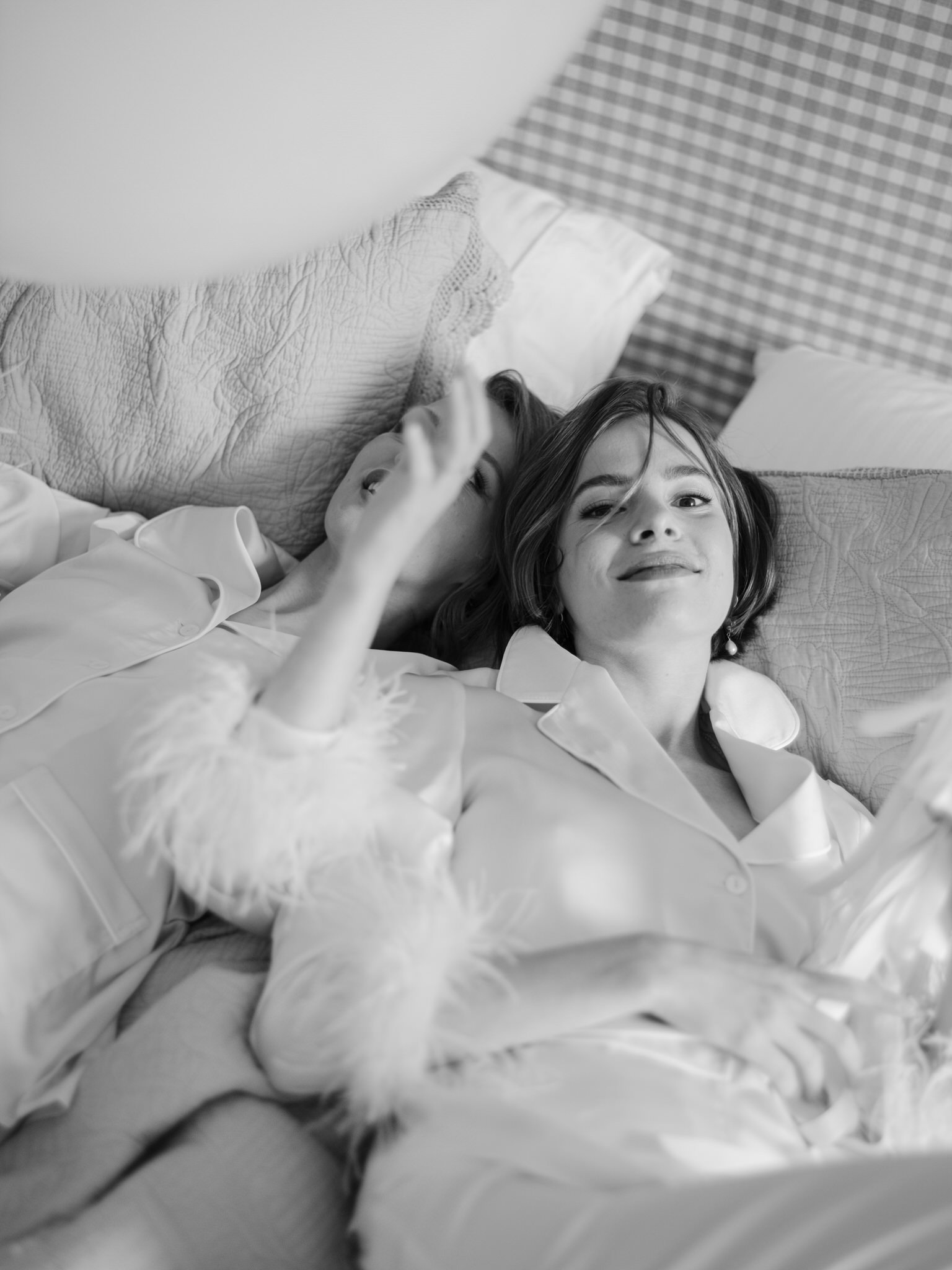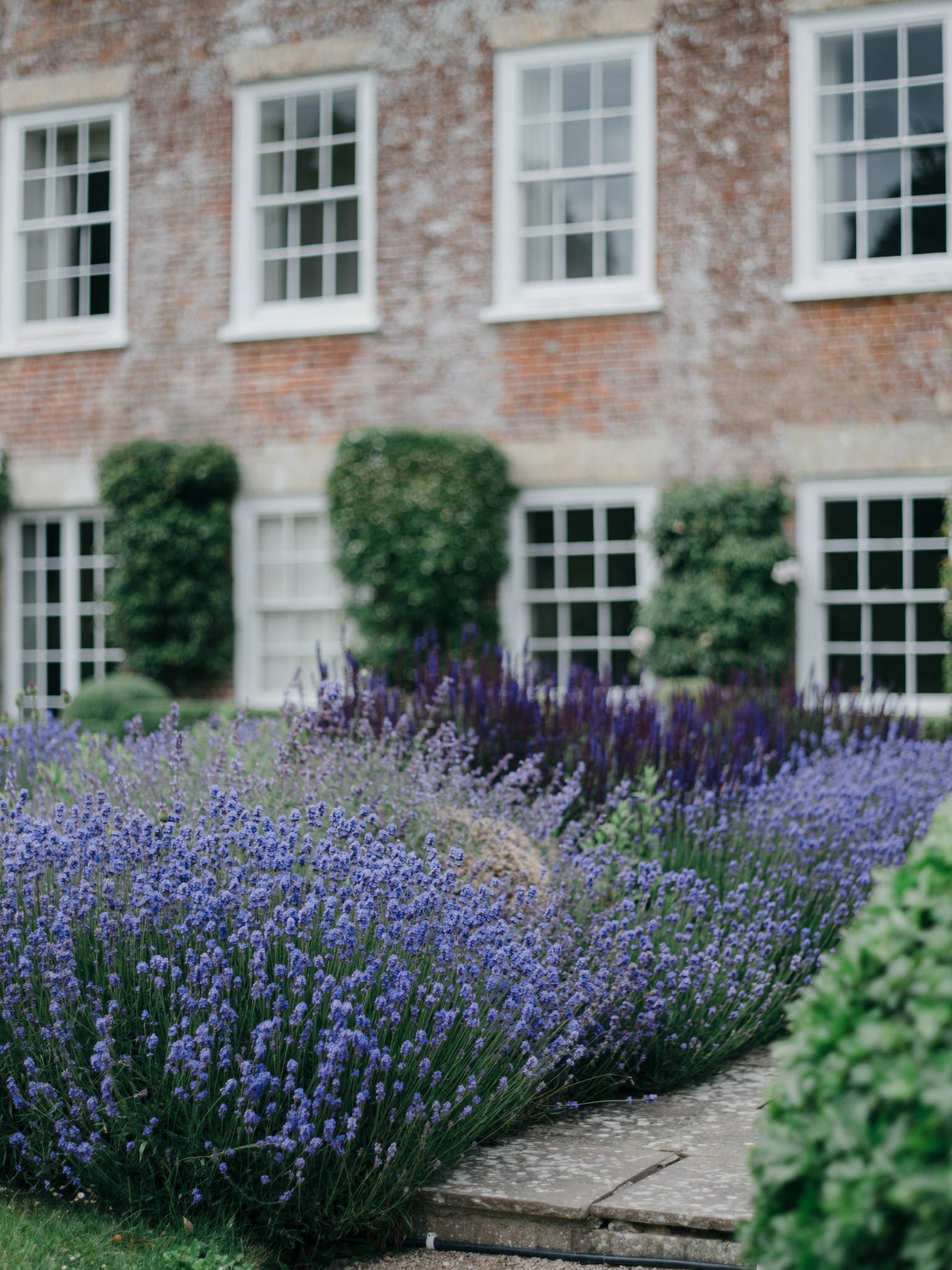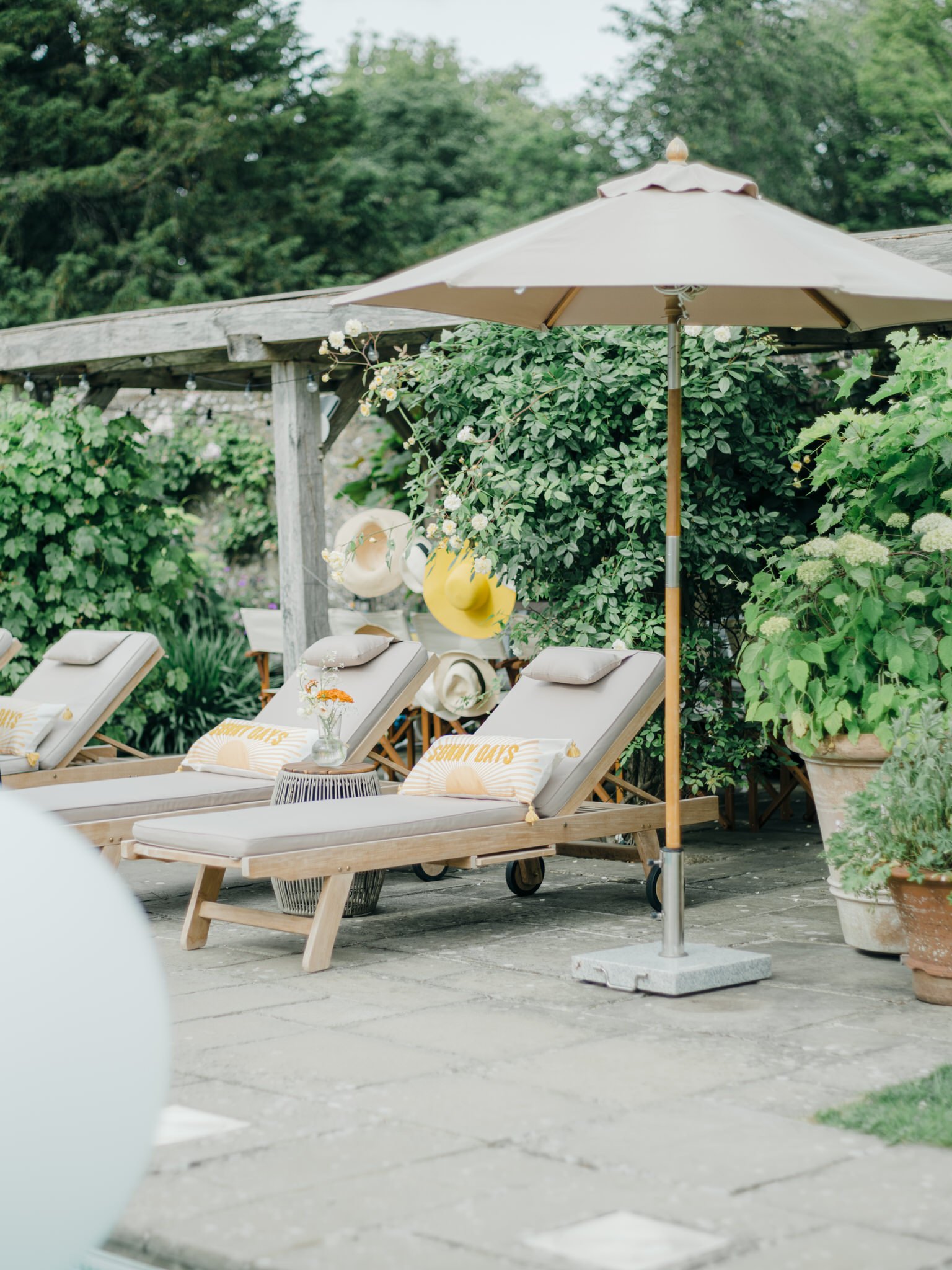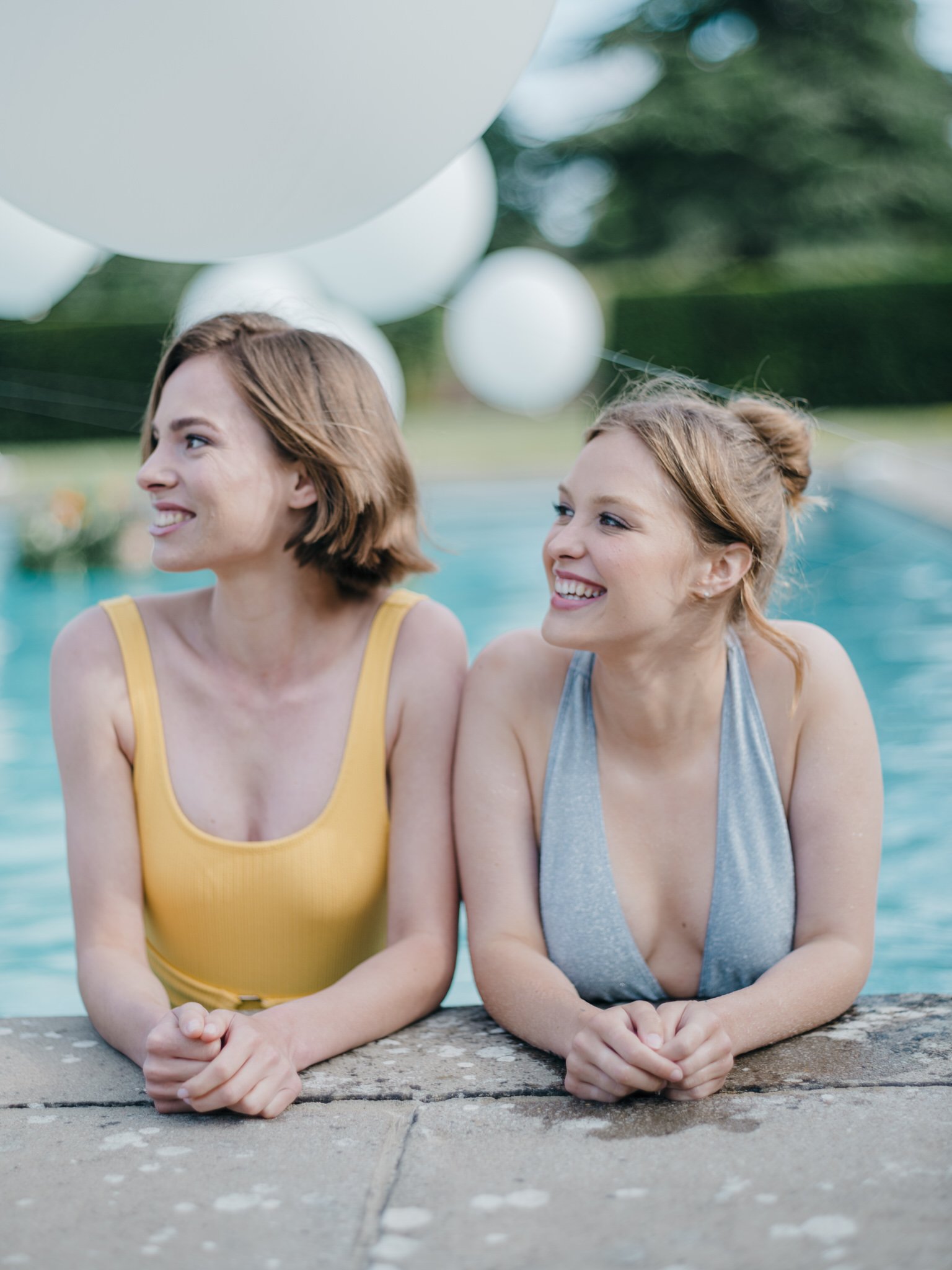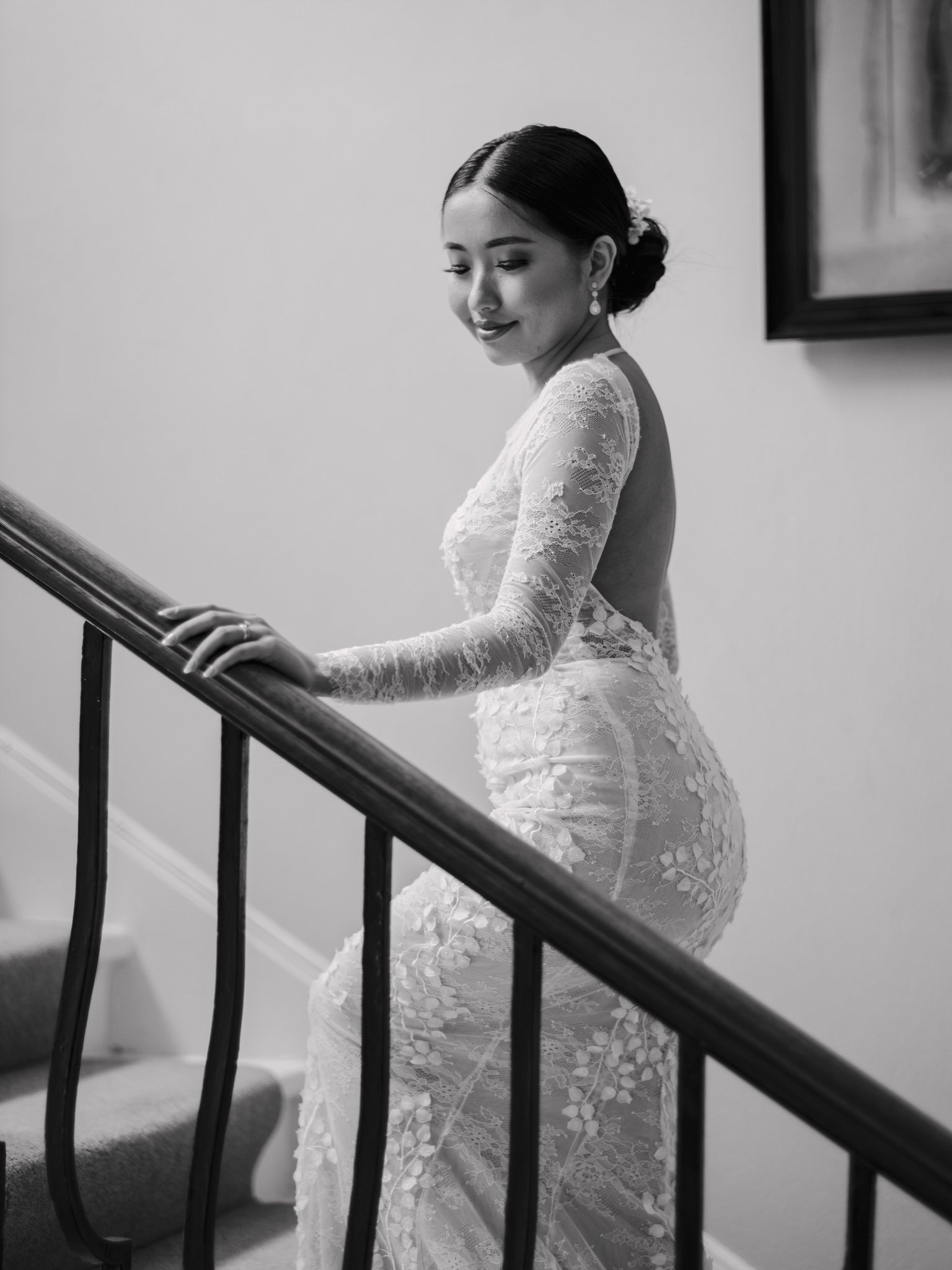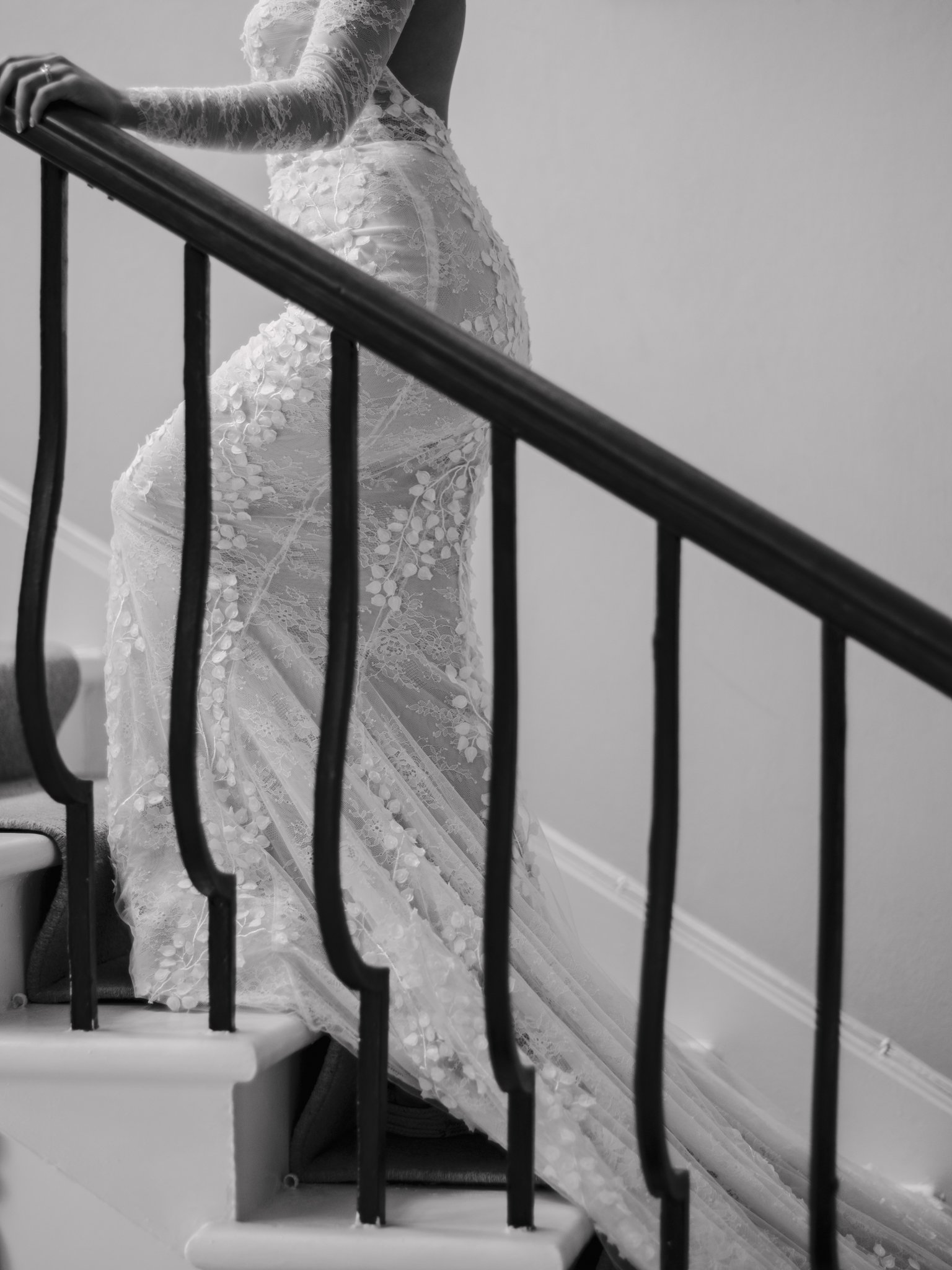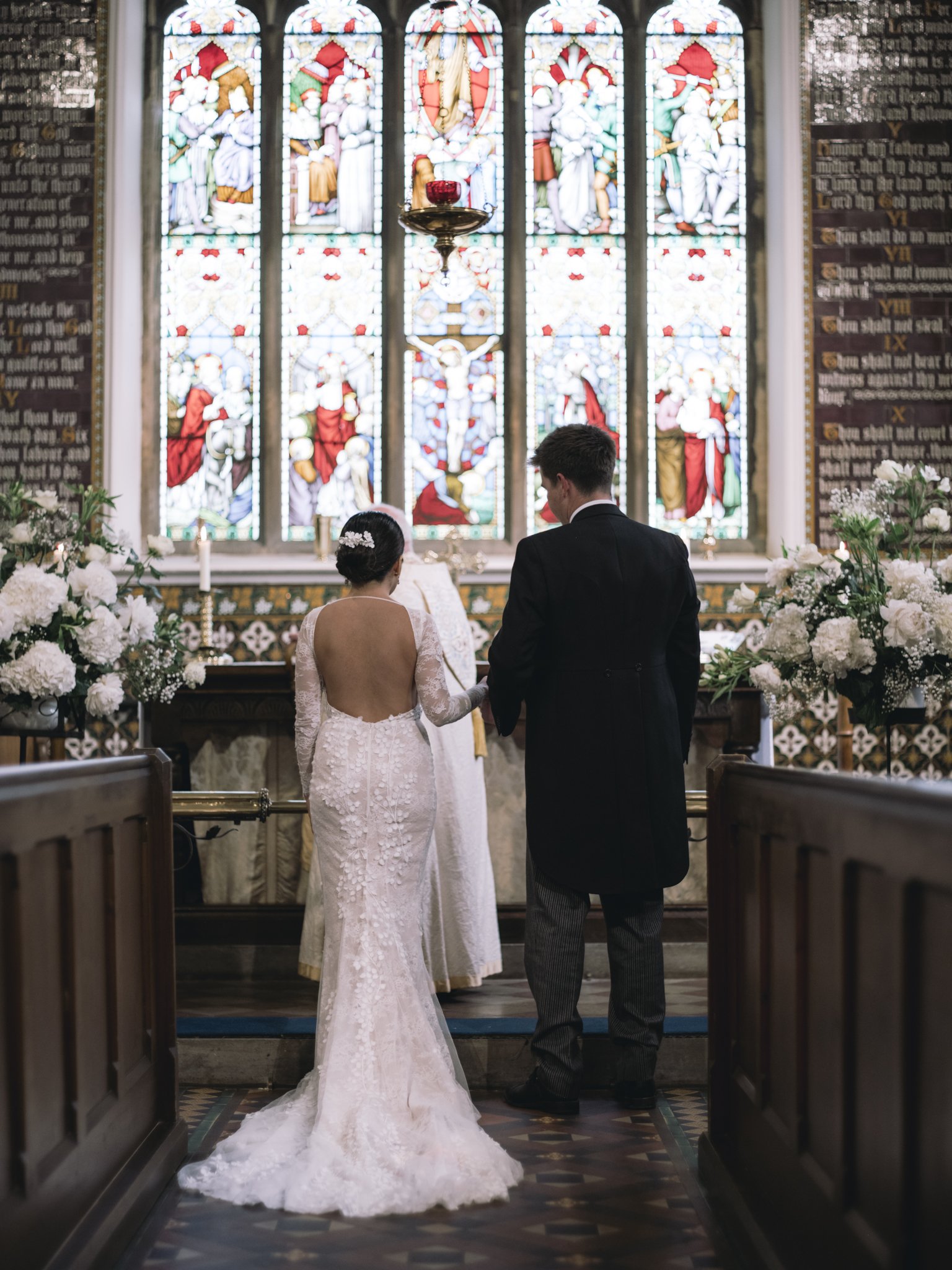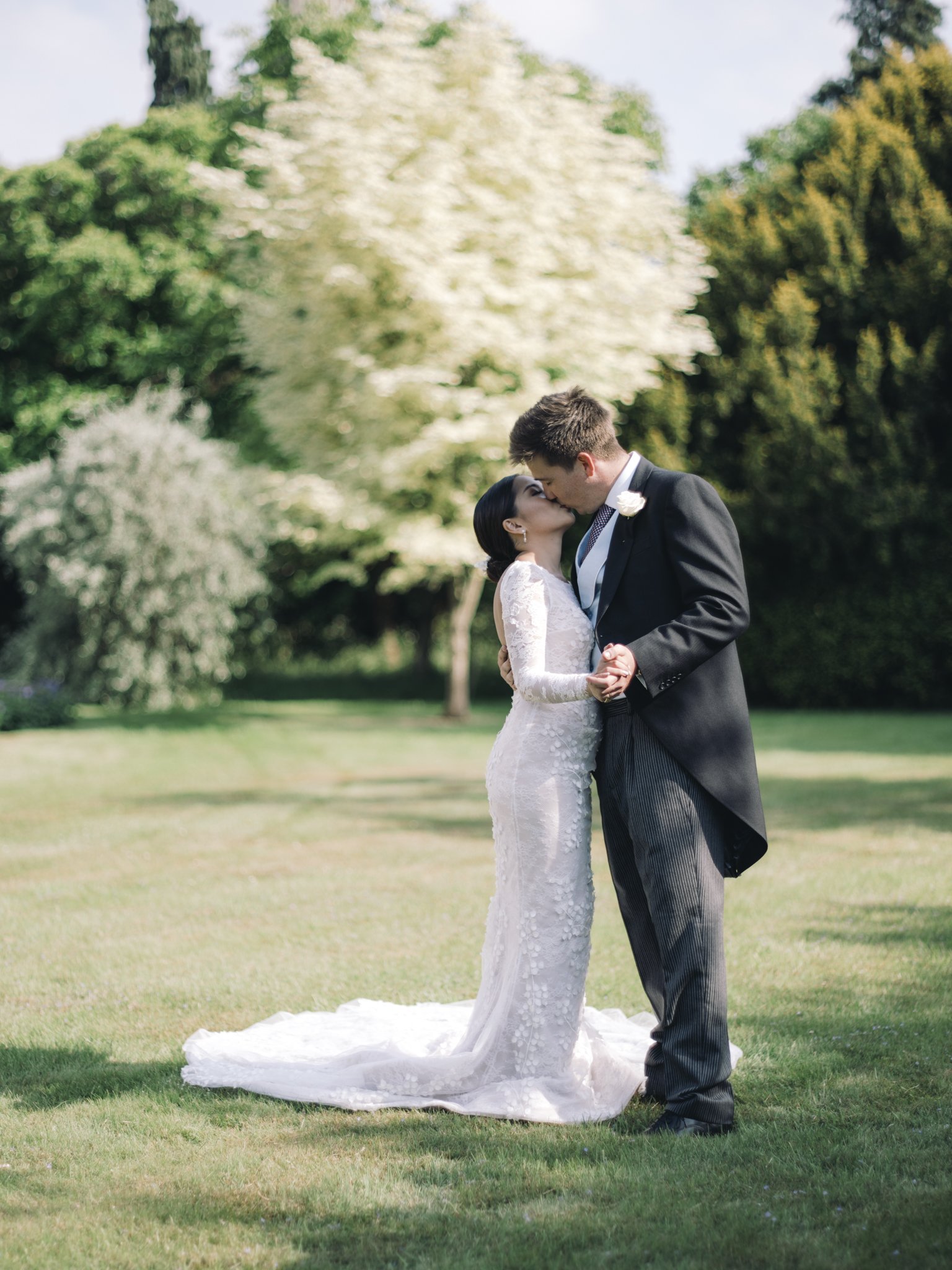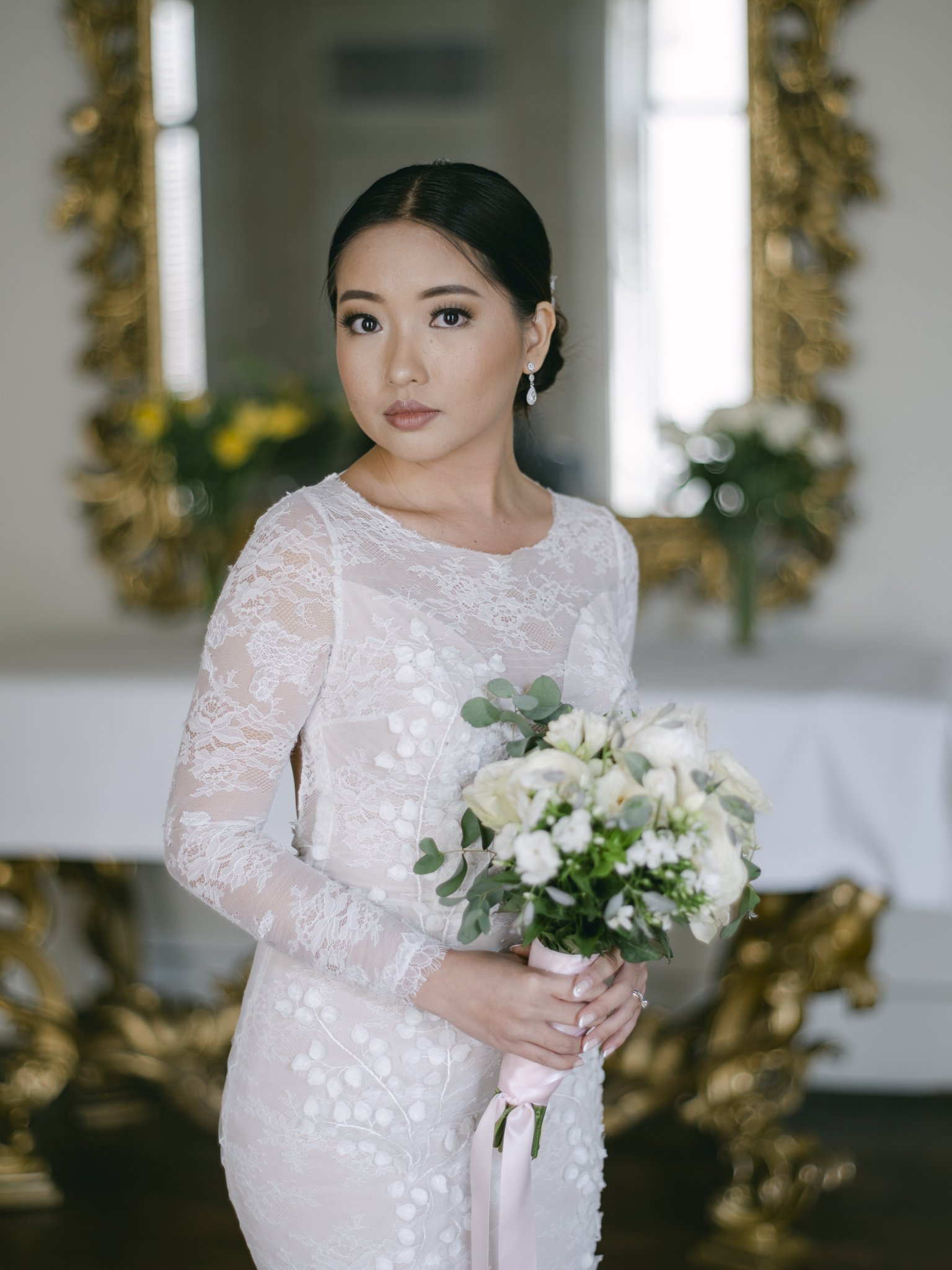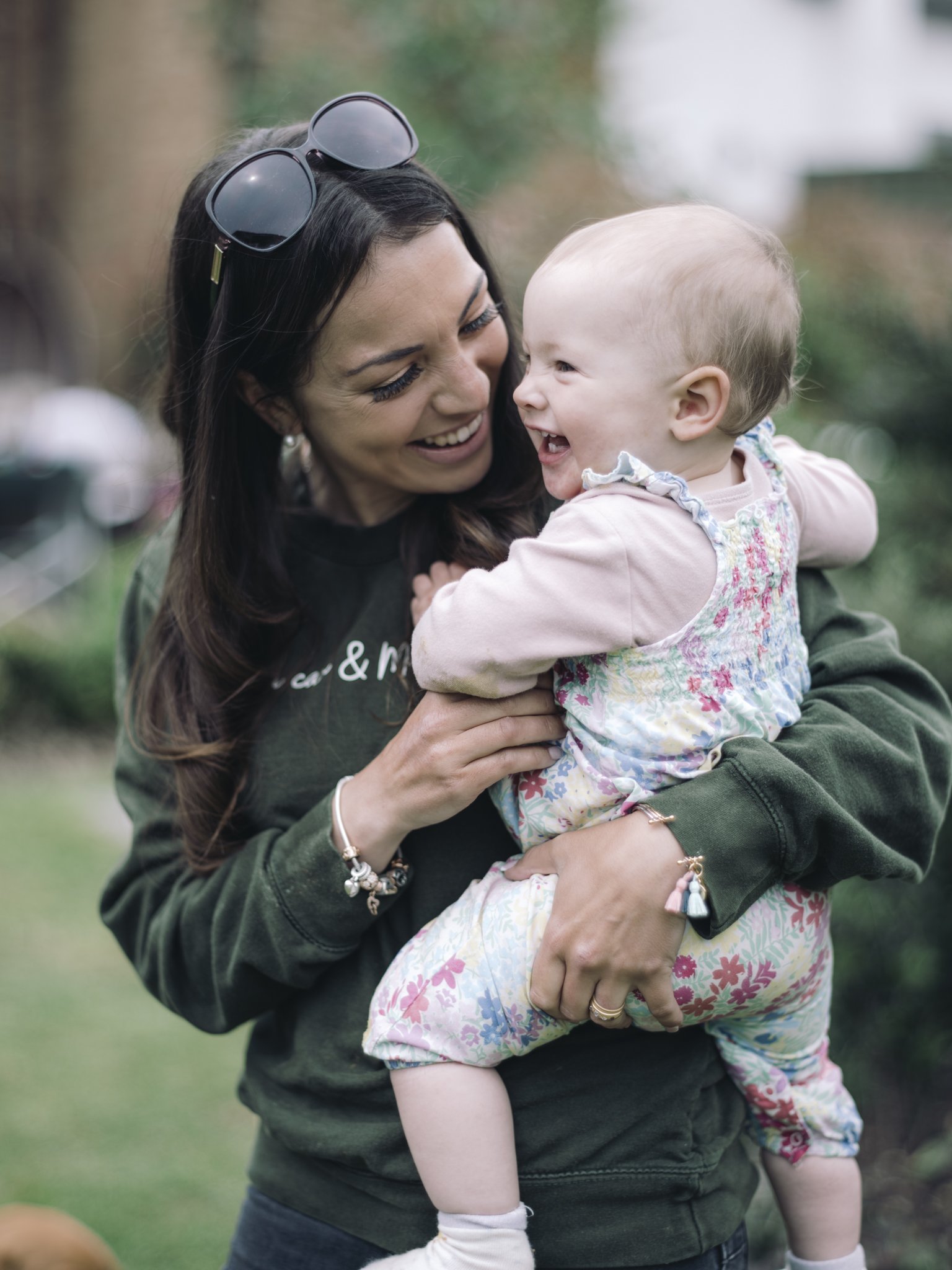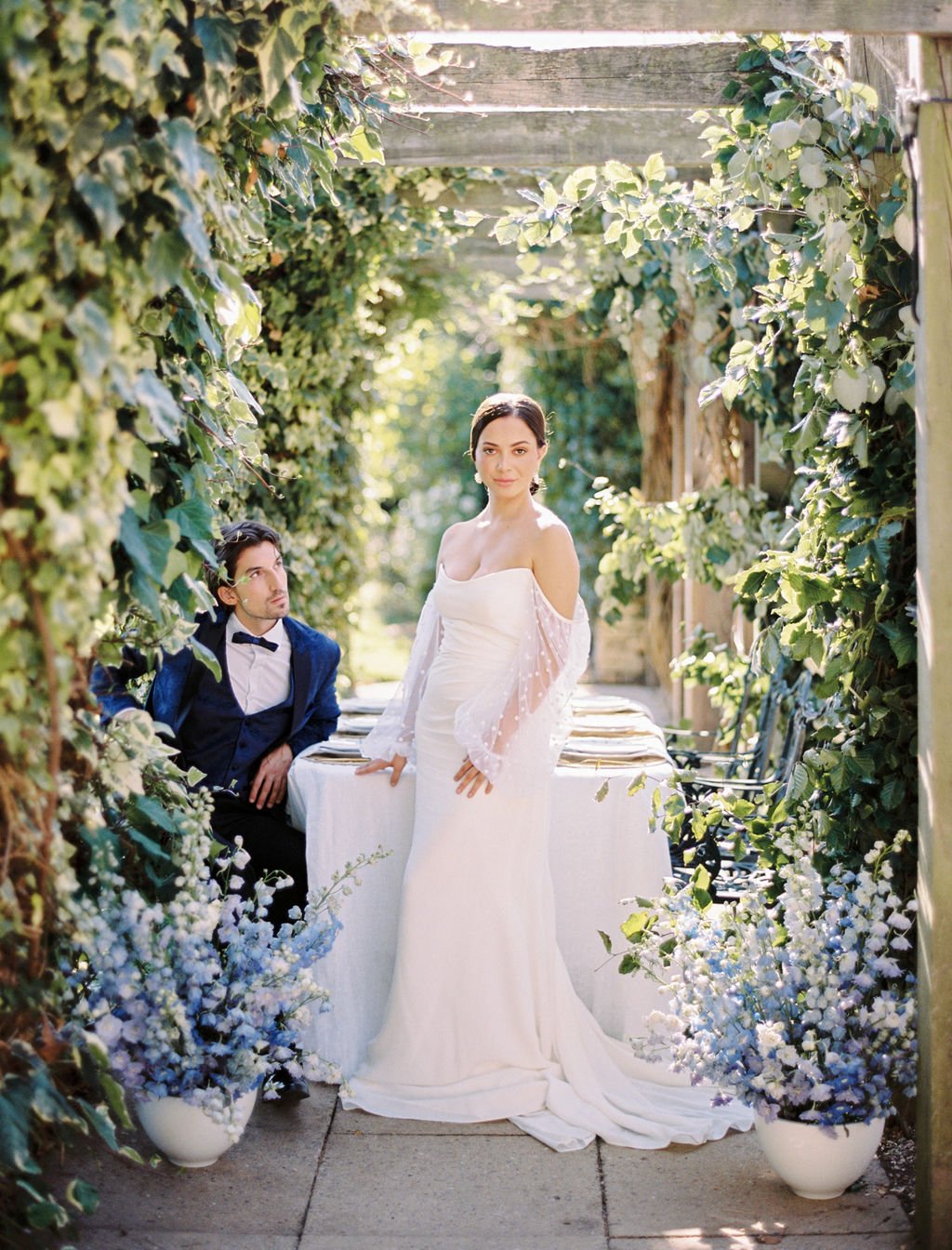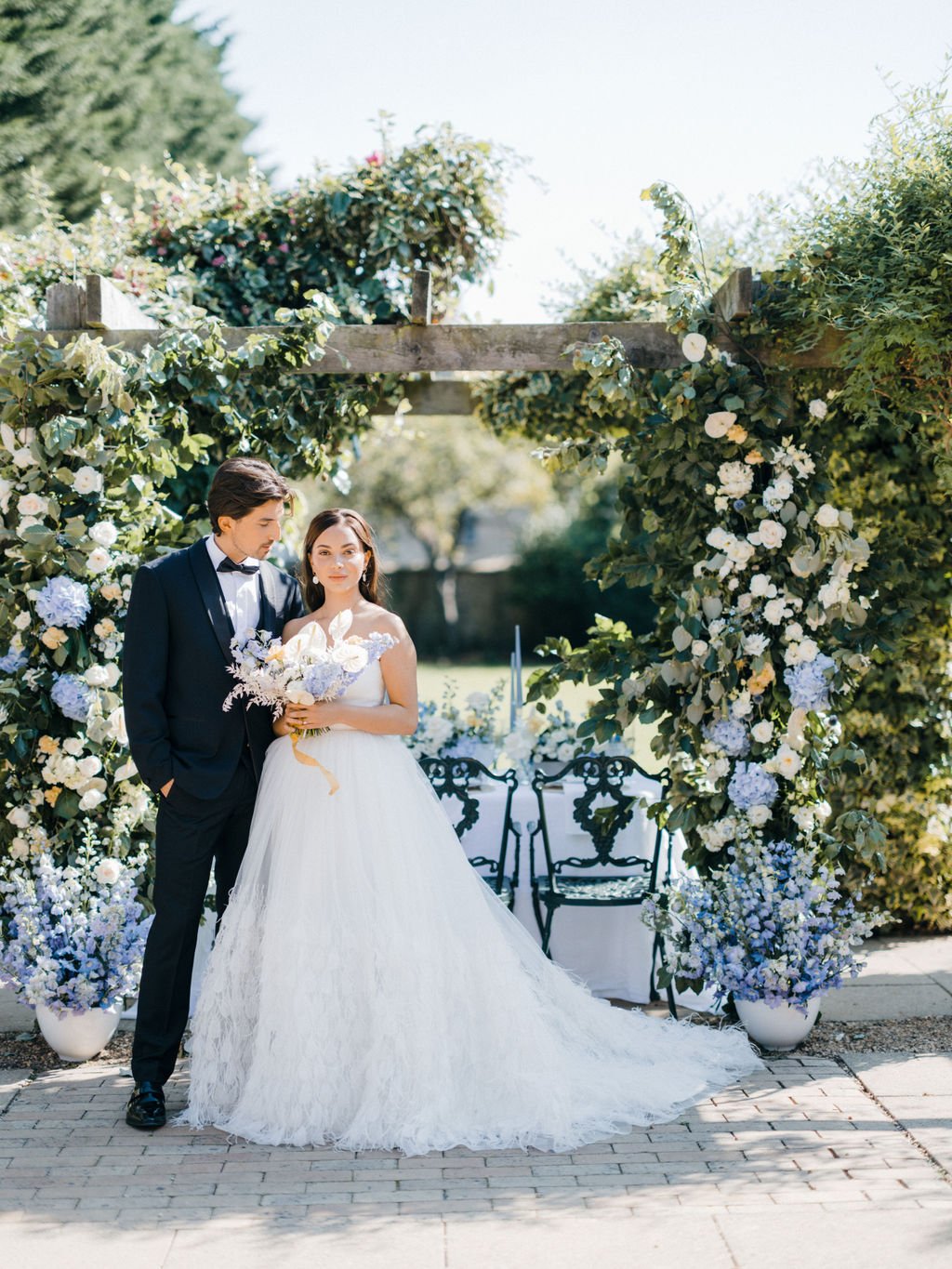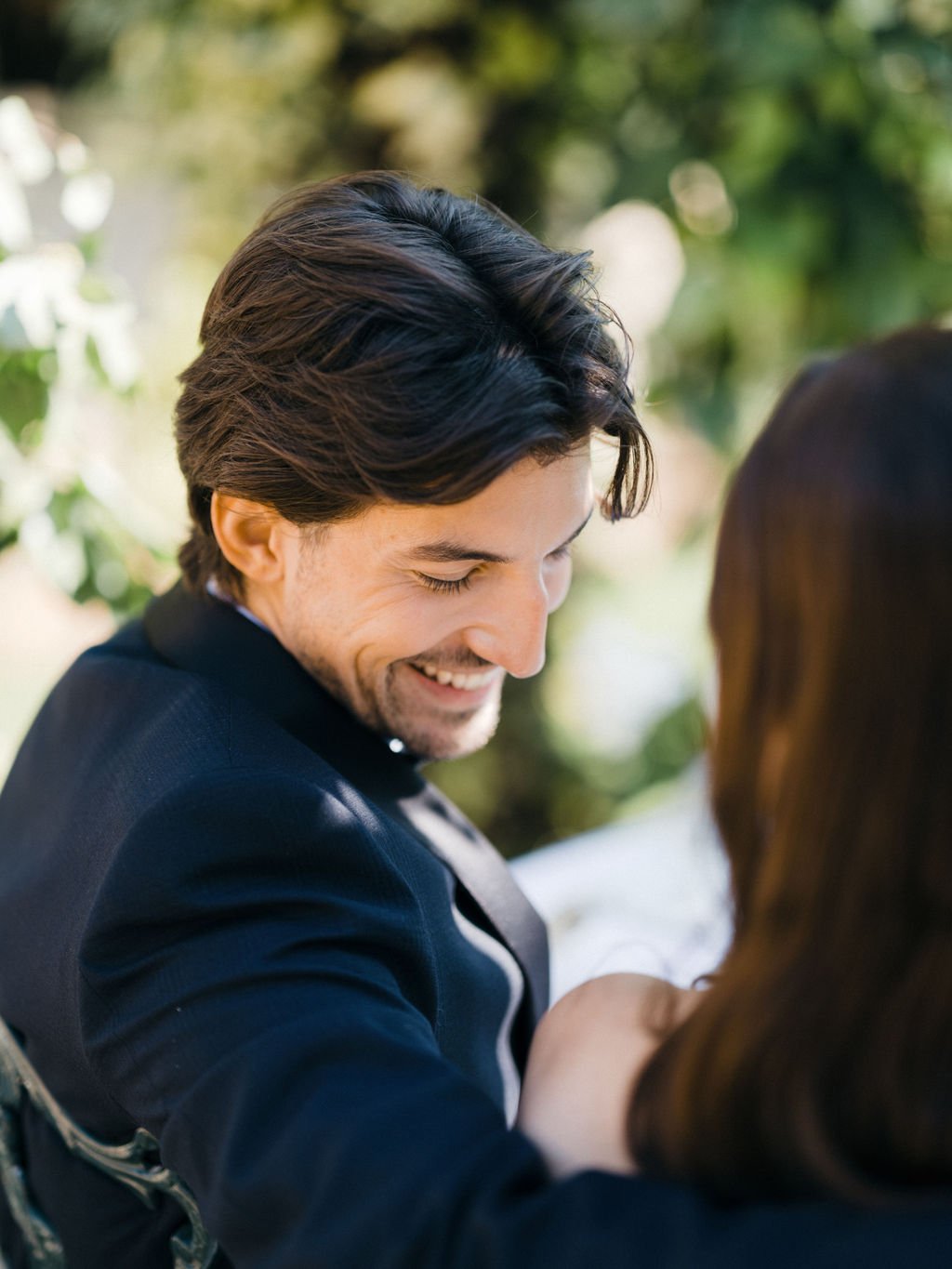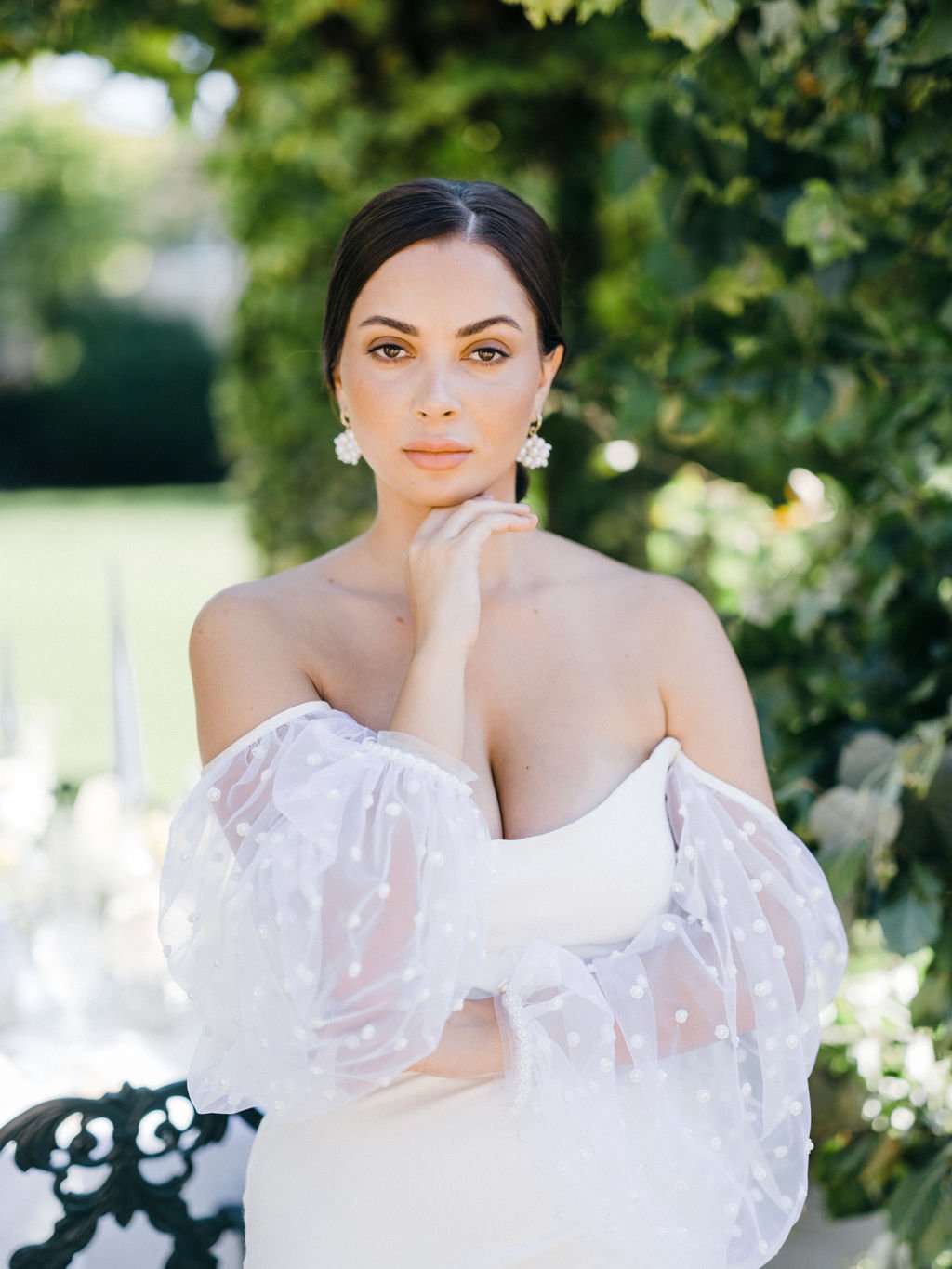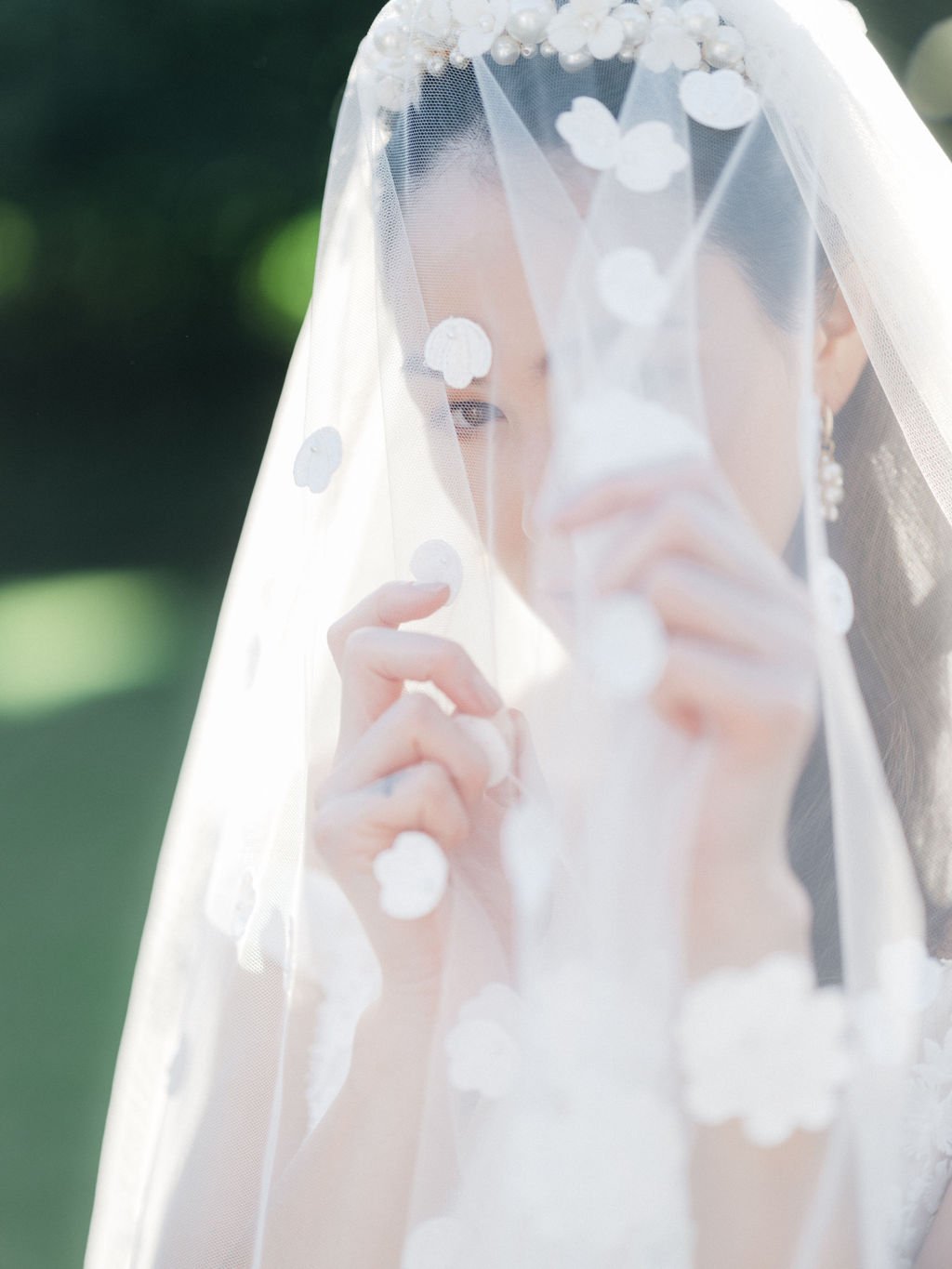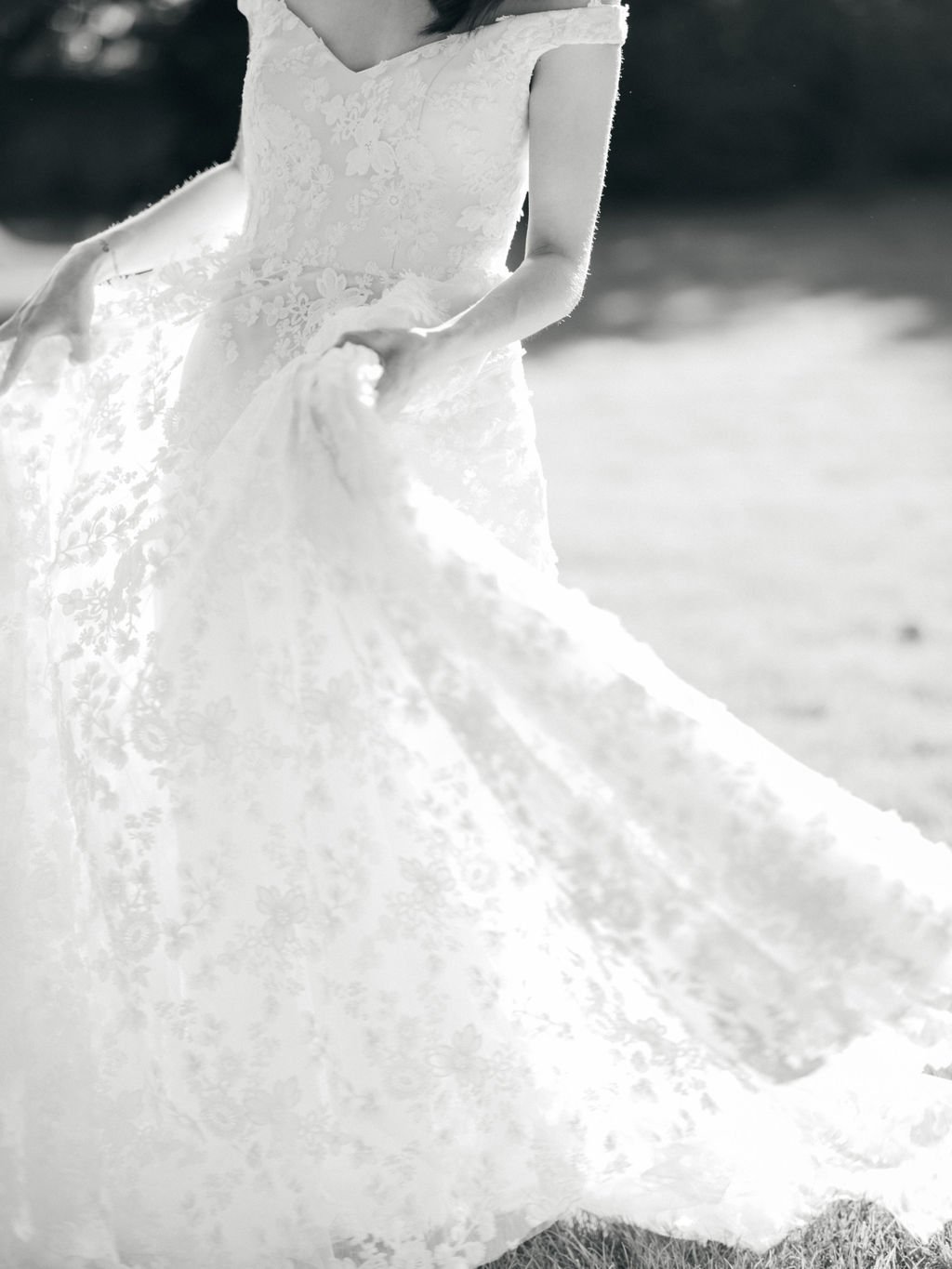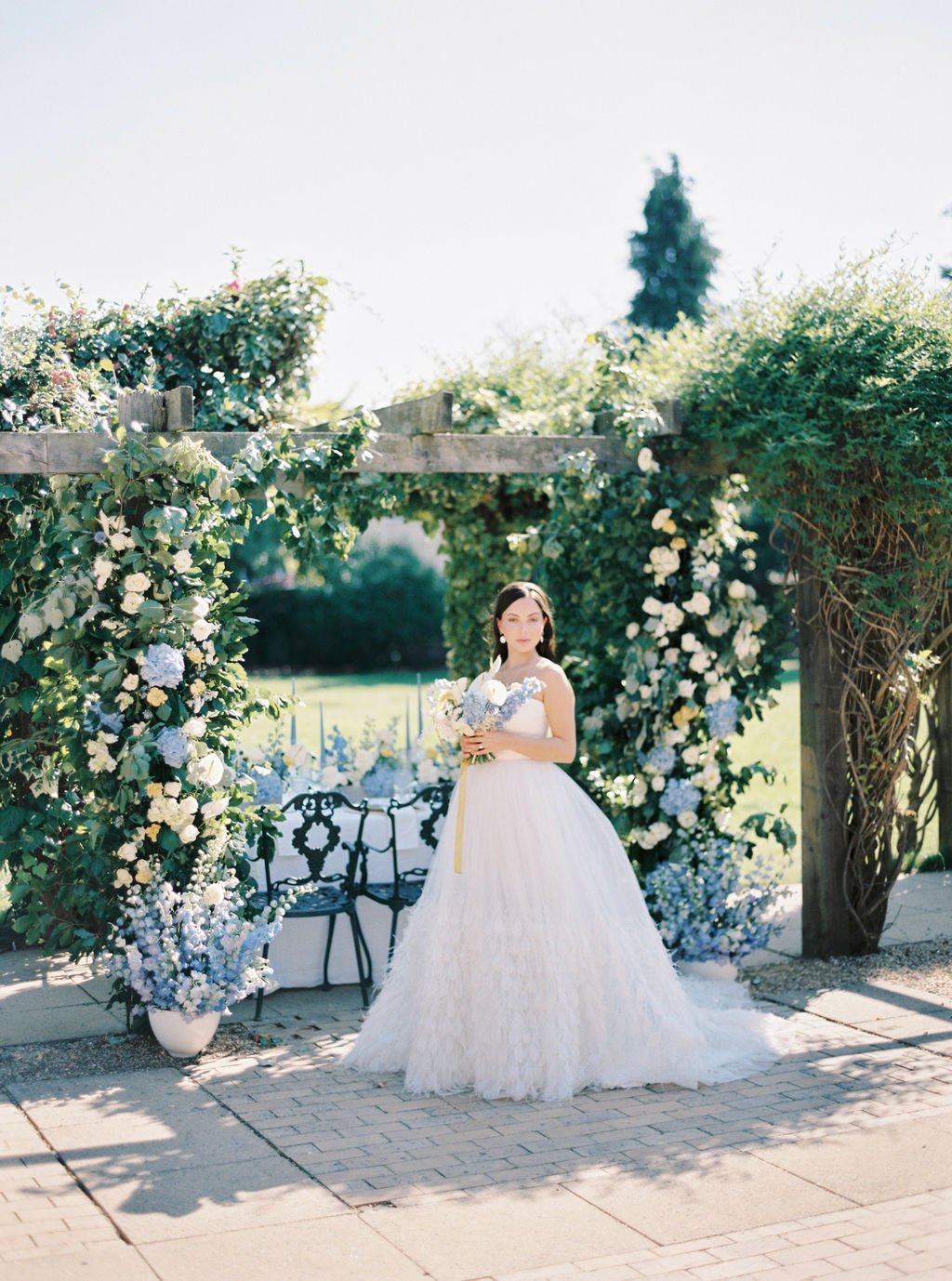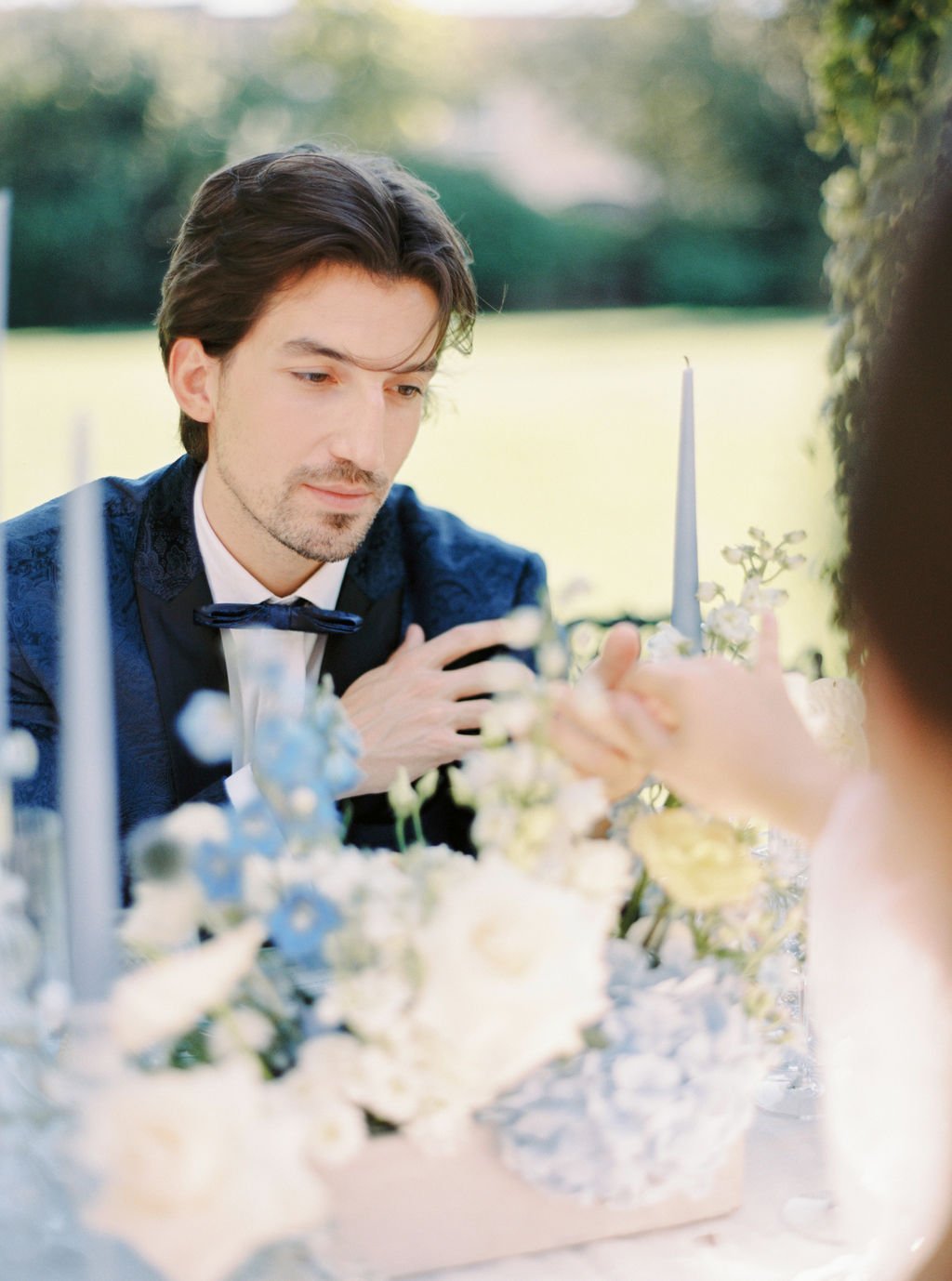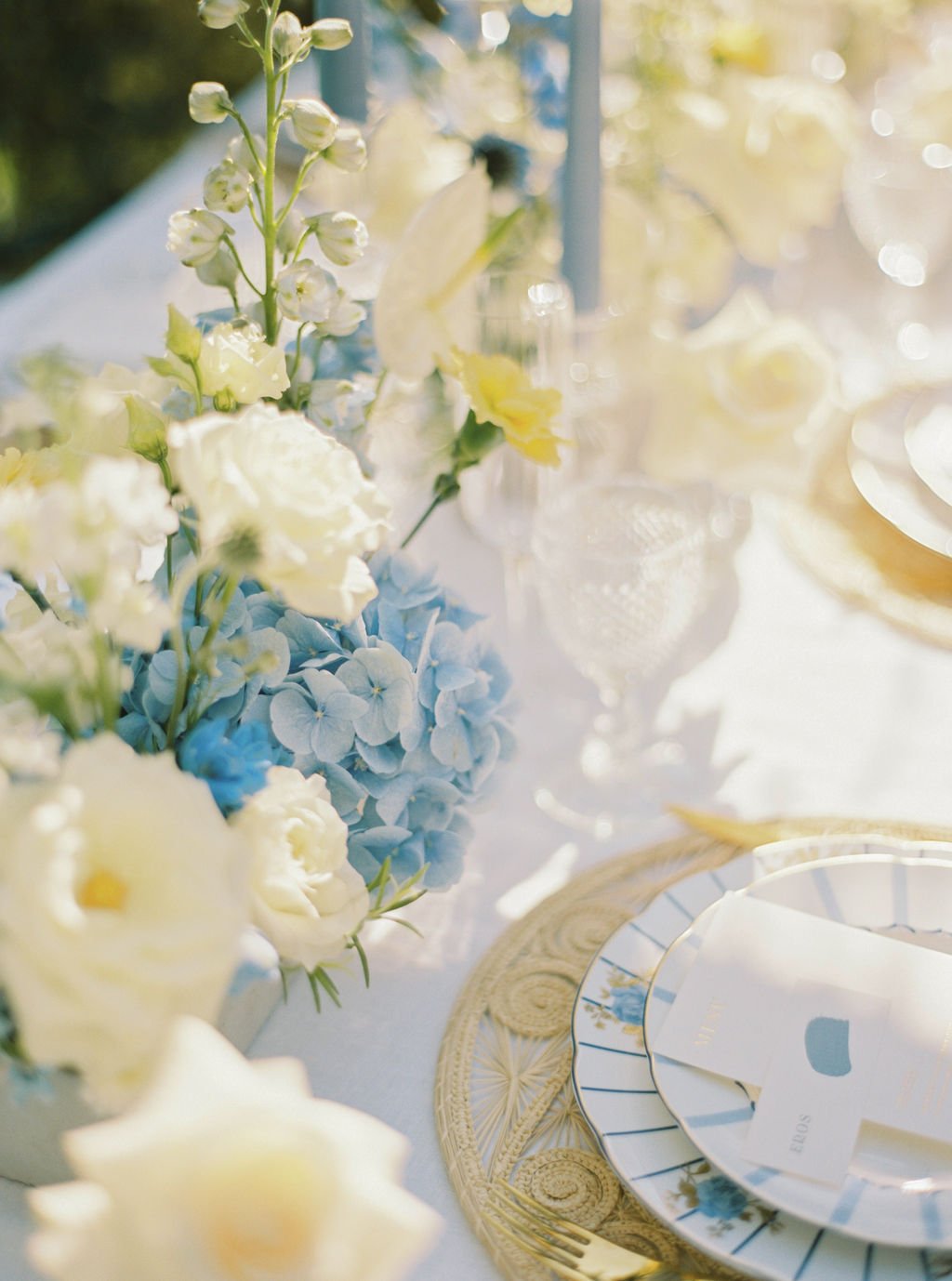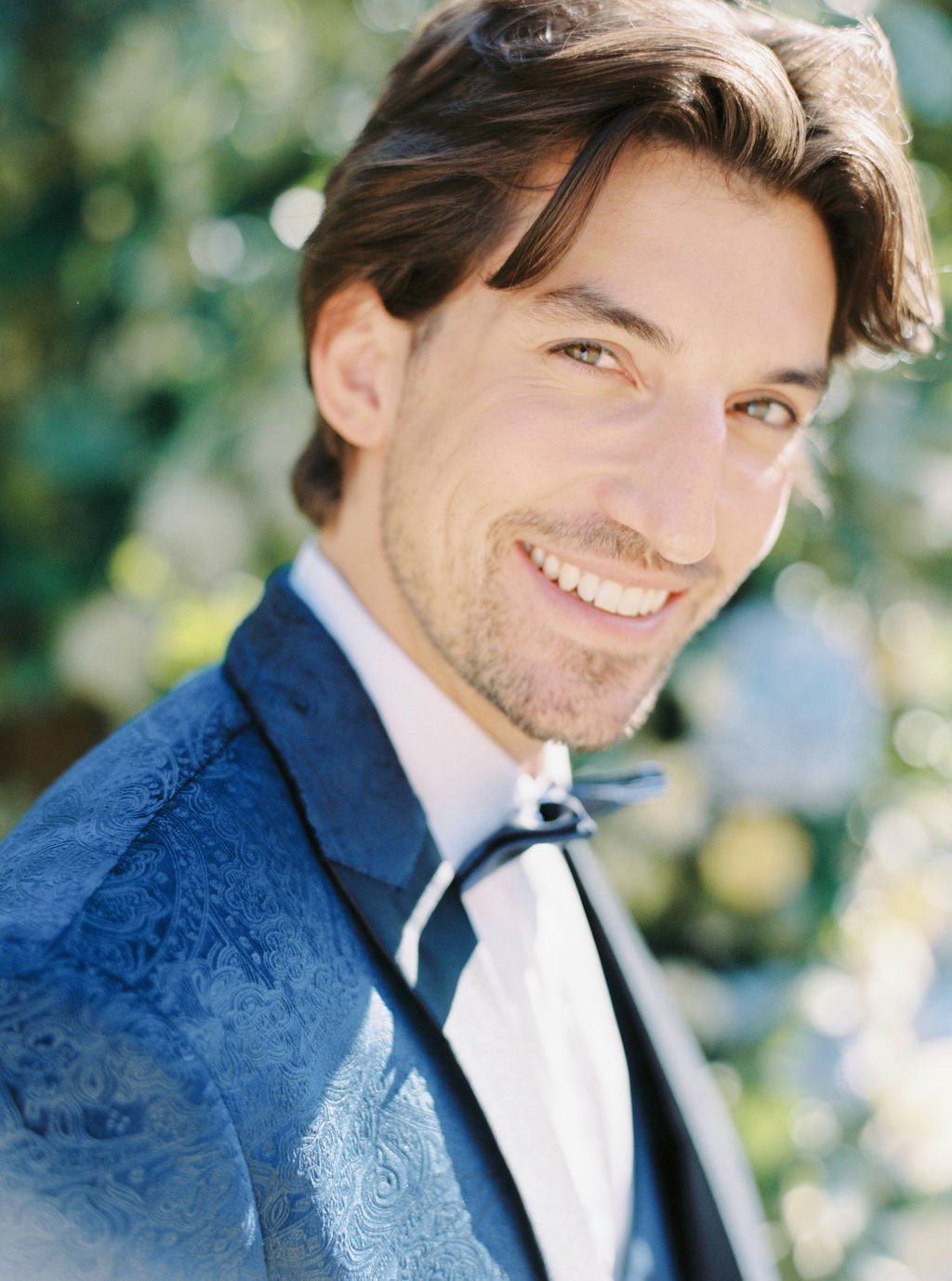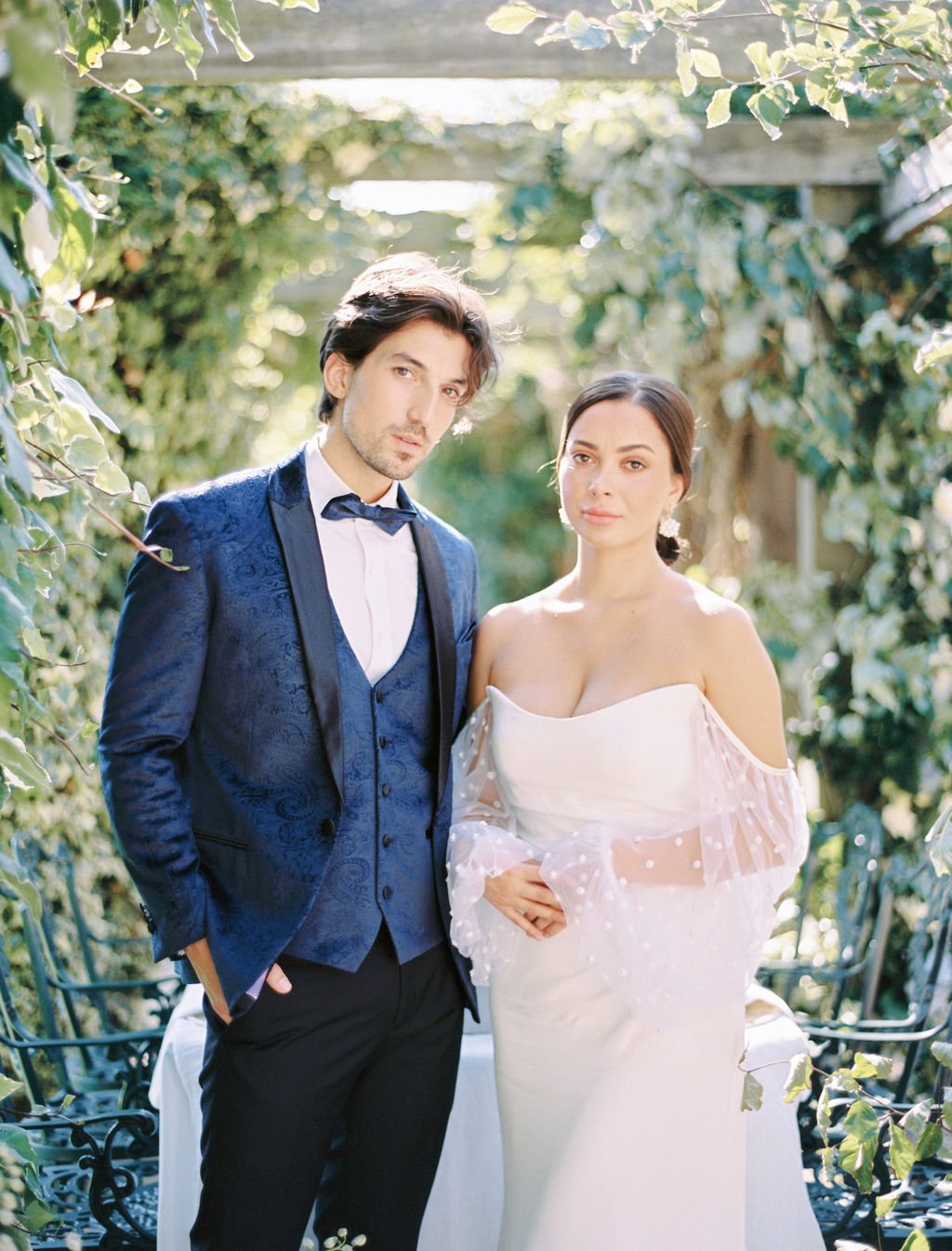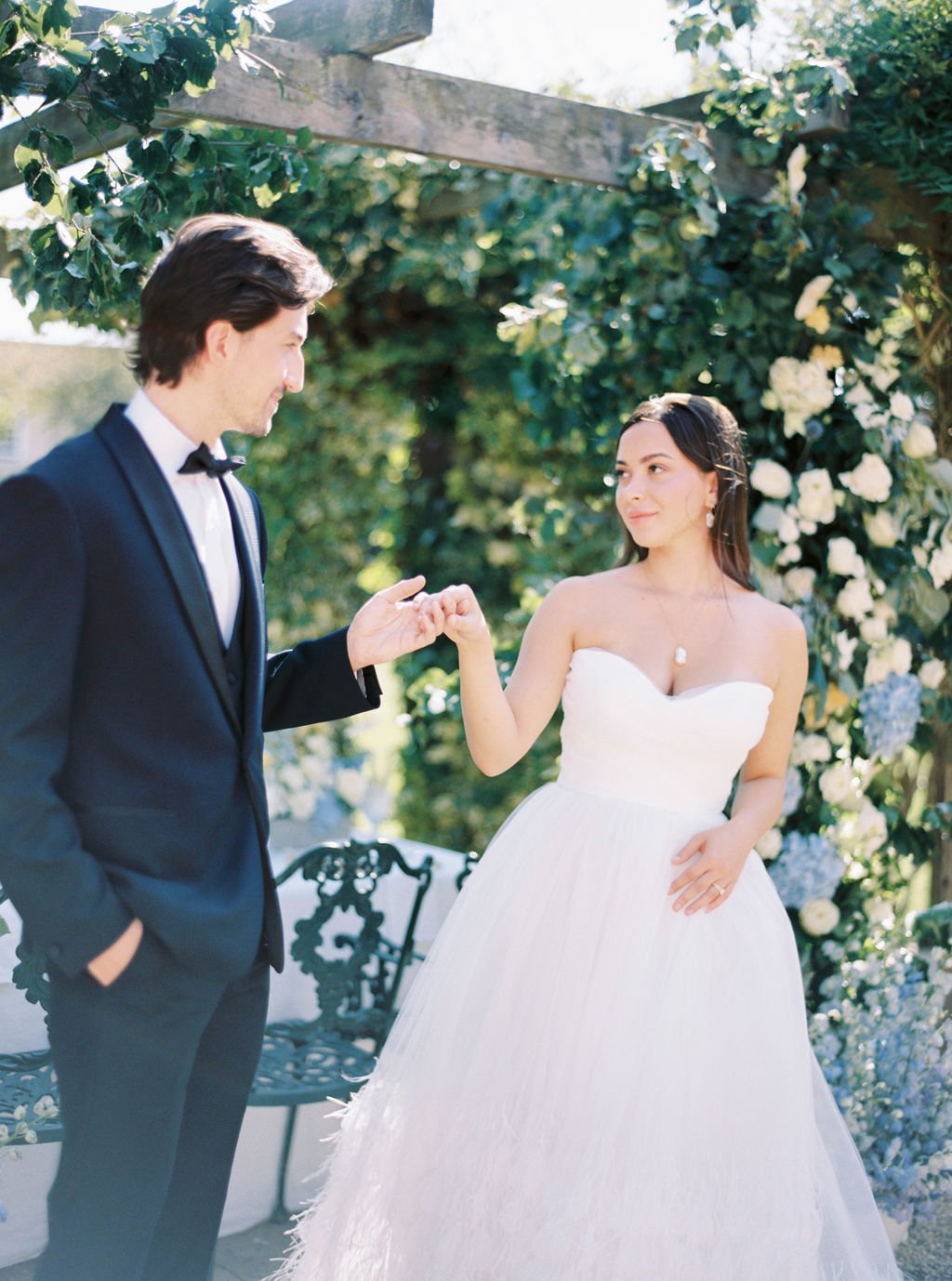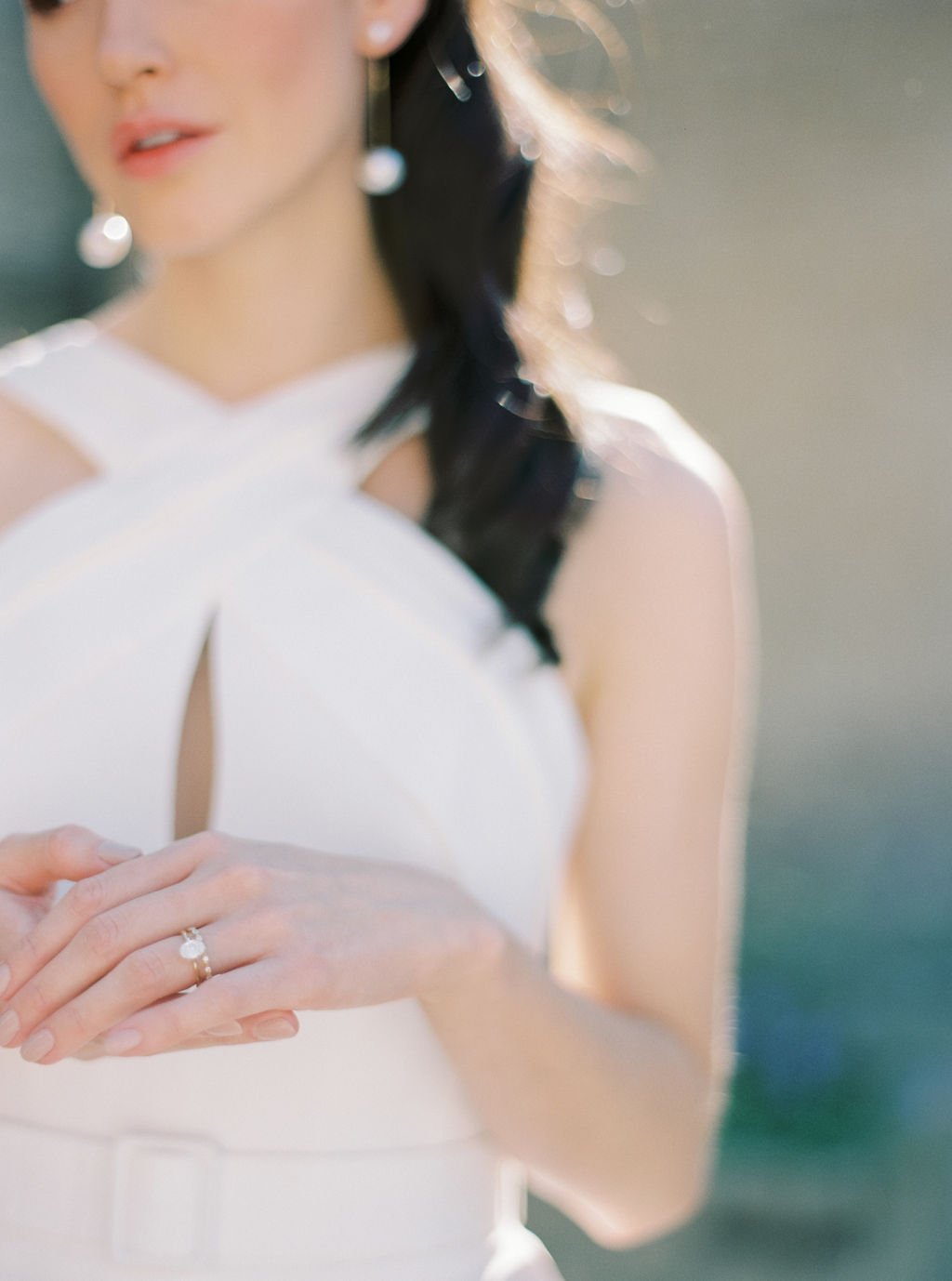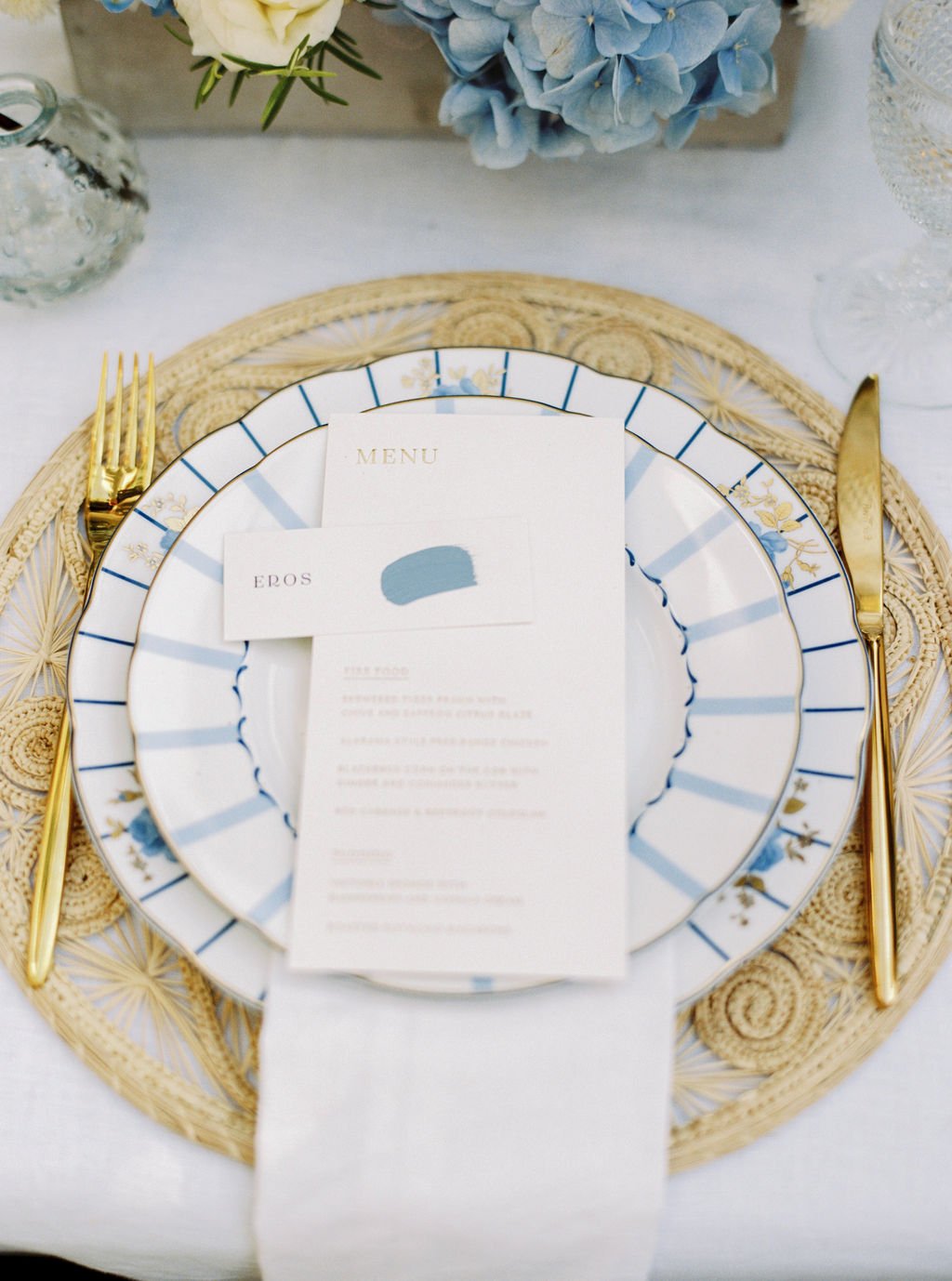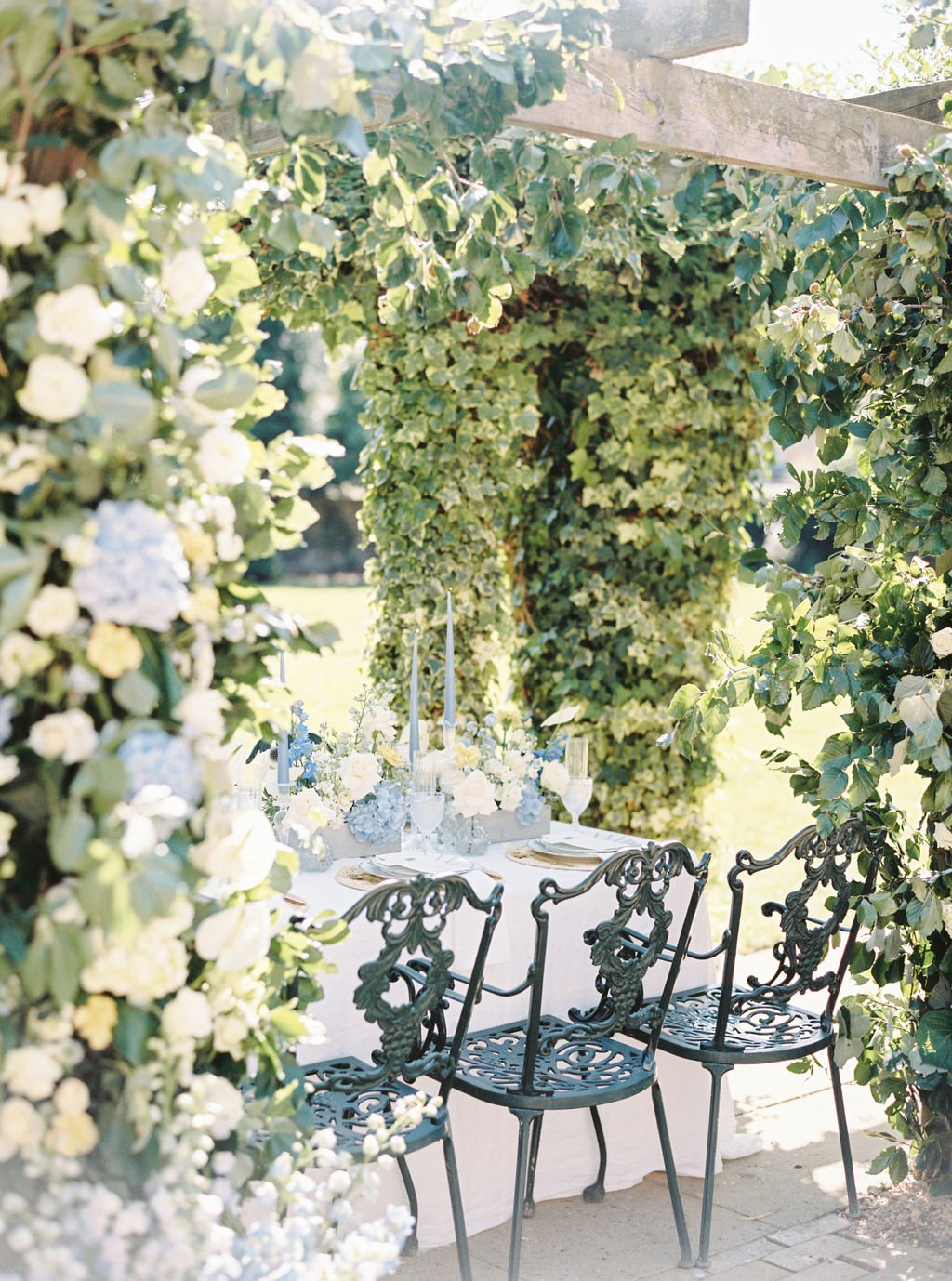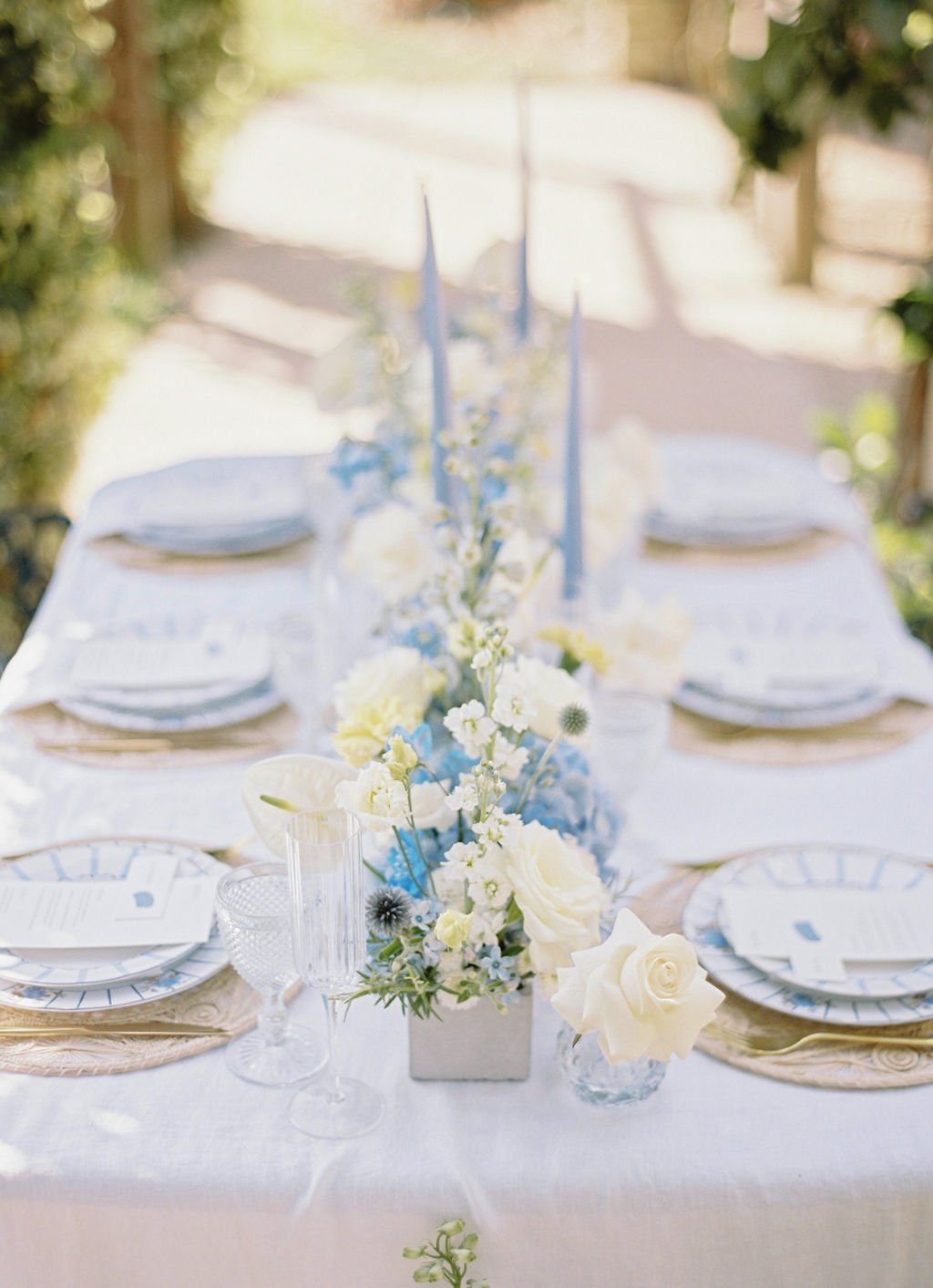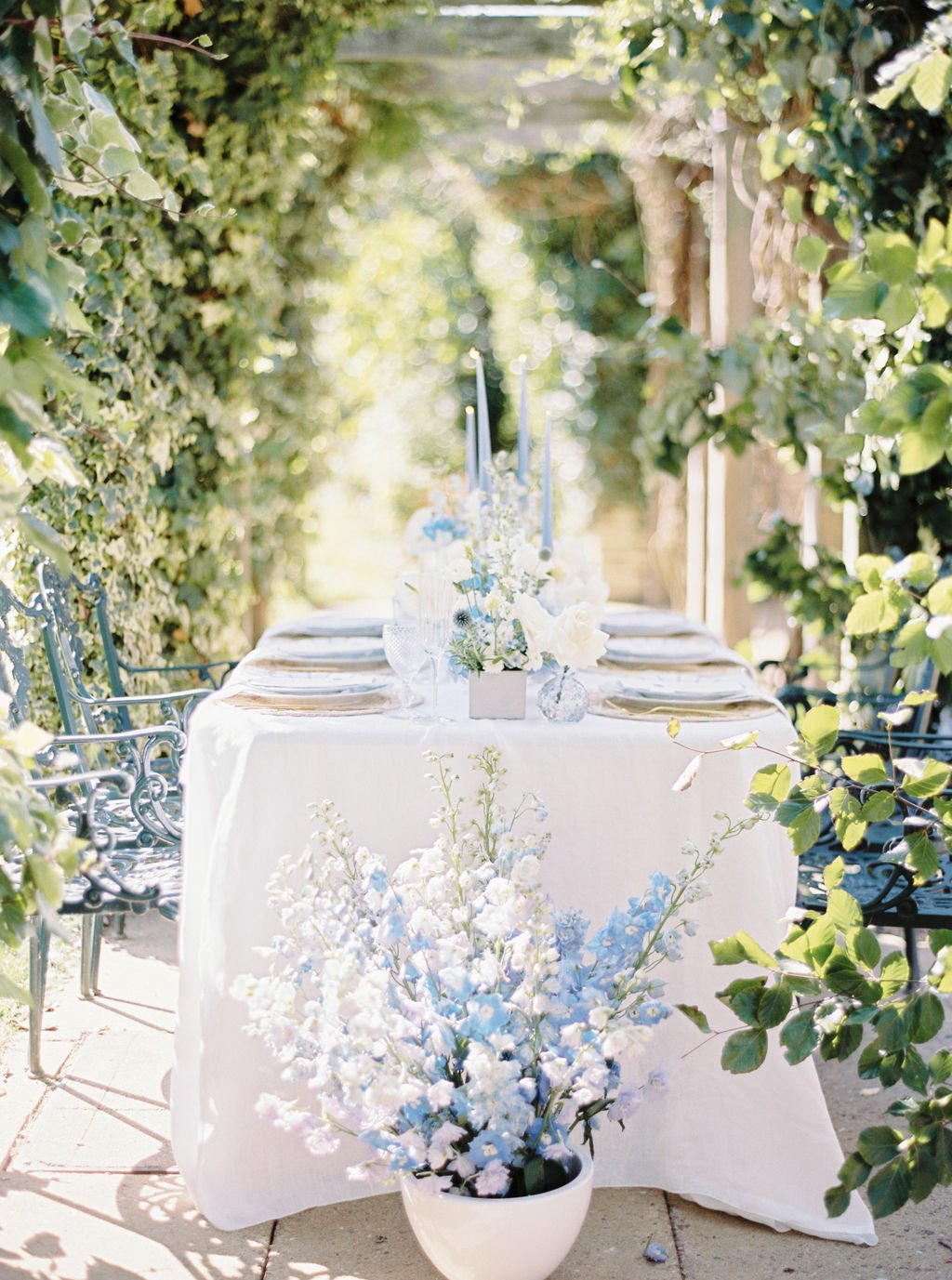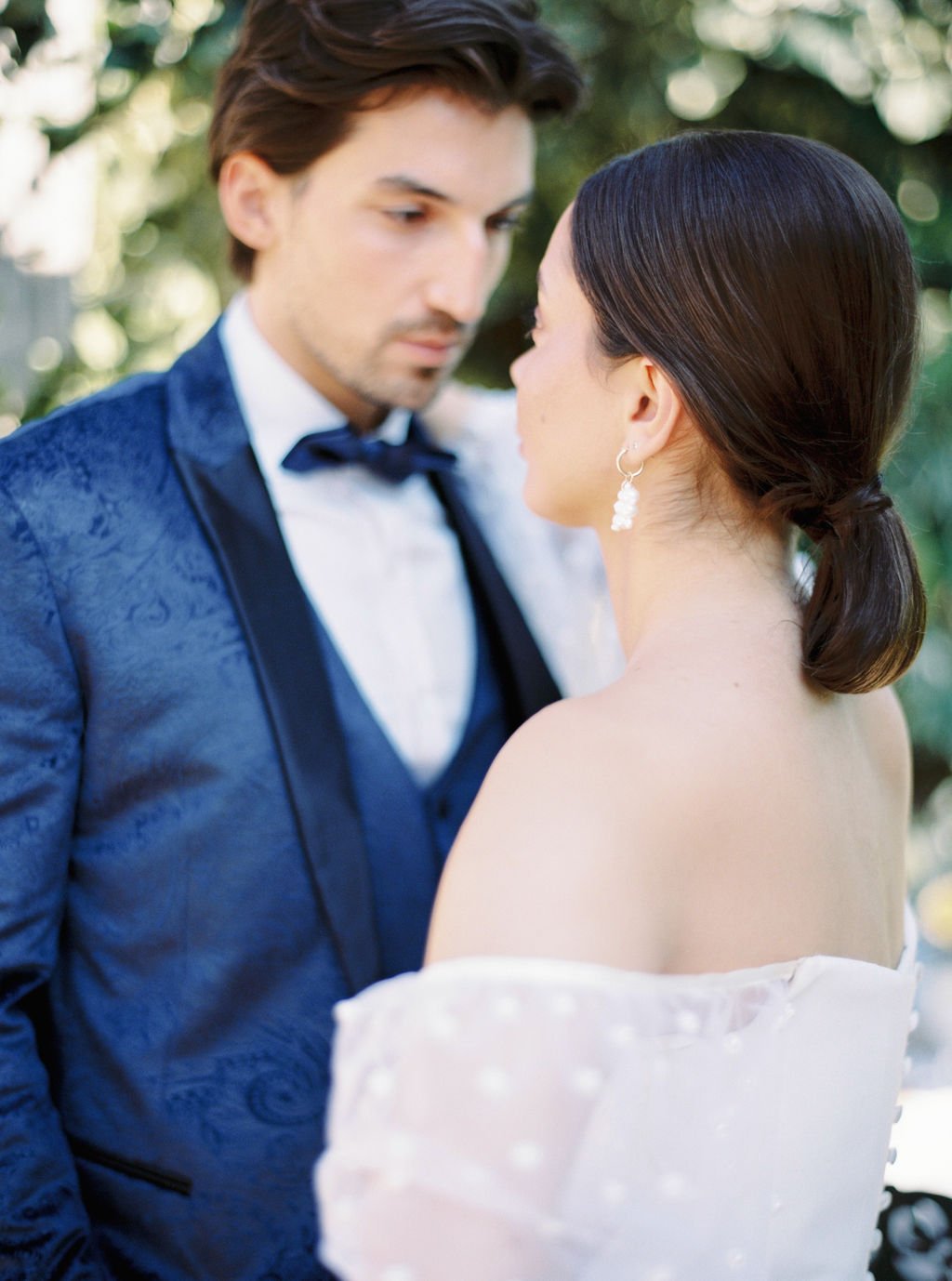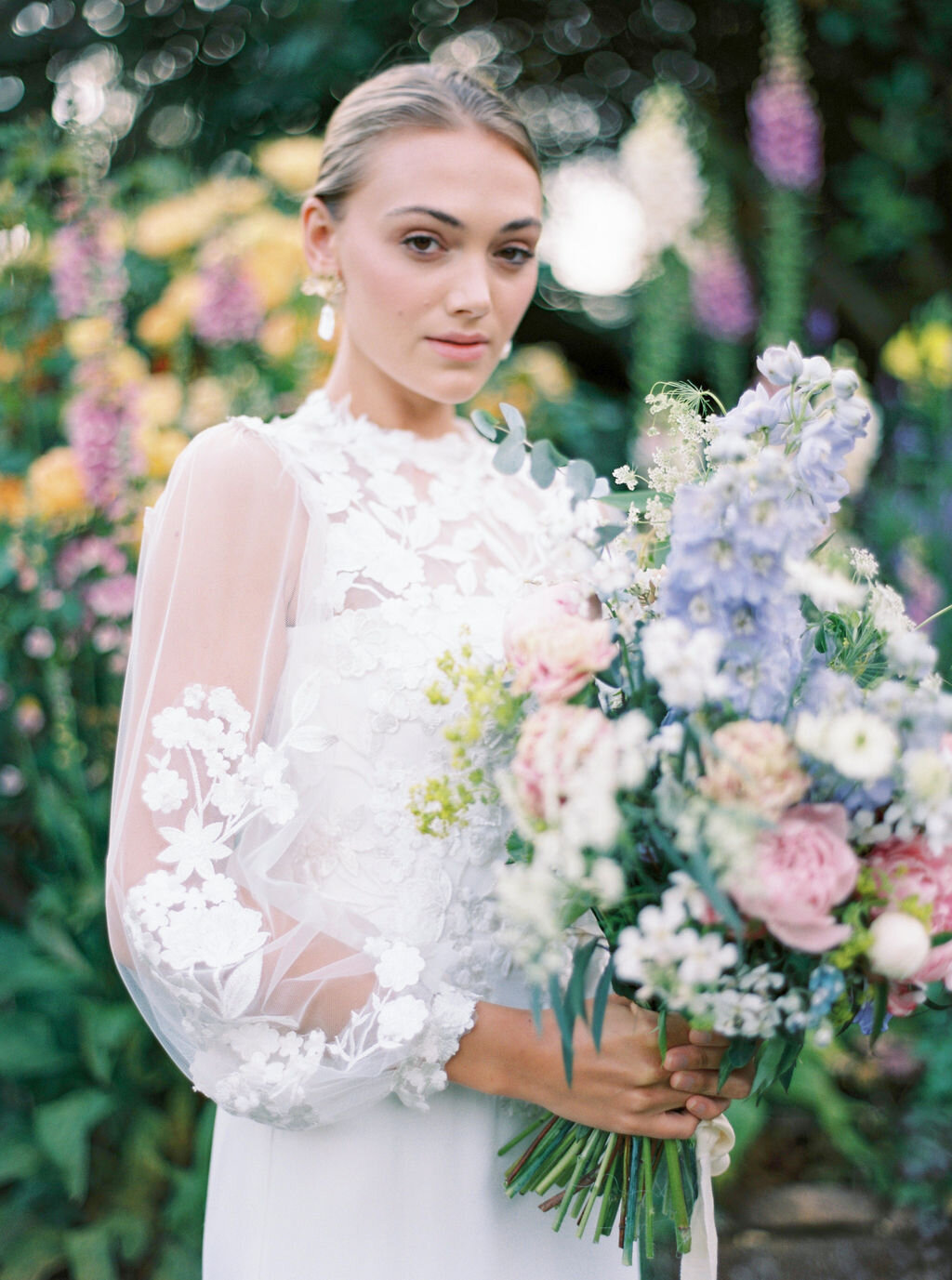An Artist’s Intent
A tale of art inspired by art.
Vibrant oil paint spills off the canvas and into life.
The painting that hangs in the decadent drawing room of Lound Hall holds a unique tale. The true story of a man and wife, who upon seeing it at an auction, bid anonymously against each other to their limits to acquire it.
Only until it was hung there did one reveal to the other that they were in fact the opposing bidder.
Every piece of art holds a story, however it’s not always one that the artist intended.
Pulling from the colours and brush strokes of the painting as well as this story we sought to tell a tale of the emotions & the determination gone to for art.
Our bride in her exquisite Bvlgari high jewellery brings together the grandeur of the space with the intricate detail of the art piece to create this gilded scene.
Credits:
Photography - Stories From Eros & By Jennifer Louise
Videography - Stories From Eros
Venue, Crockery & Furniture - Lound Hall Estate
High Jewellery - Bvlgari
Bridal Fashion - Frances Day Bridal, Suzanne Neville & Jesus Peiro
Bridal Jewellery - Miss Clemmie Accessories
Hair Stylist - Hannah Blinko
Make Up Artist - Hannah Dora
Florist - Dreamboats and Carousels
A Summer Wedding at Oakley Court
The picturesque location was by the River Thames. Oakley Court is a beautiful Victorian mansion with glorious gothic architecture. Oakley Court made for the most beautiful celebration of A&D’s wedding.
In the summer of 2022 we had the pleasure of capturing a truly special wedding in Windsor, England.
The picturesque location was by the River Thames. Oakley Court is a beautiful Victorian mansion with glorious gothic architecture. Oakley Court made for the most beautiful celebration of A&D’s wedding.
Wedding Film
Preparation
Bridal preparation took place in a little house on the grounds. Situated with a small balcony over looking the river is was a truly calming spot to get ready.
The Ceremony
A&D married surrounded by friends and family beside the River Thames.
Their beautiful florals looked as though they were at one with the location as they added a elegant statement to their ceremony.
We captured much of A&D’s wedding using film photography, film photography adds a truly timeless look to the images.
Couple Portraits
Evening Party
A&D partied the night (and day) away. They had incredible live entertainment throughout the day for their guests that intensified into the evening.
Credits -
Photography & Videography - Stories From Eros
Venue - Oakley Court
Planning & Furniture - Lounge & Linger
Dress - Tephi
Florist - Kitten Grayson Flowers
Band - The Function Band
A Wedding Weekend Inspired by The Seashore
A beautifully curated wedding weekend. Telling the story of how each moment from the wedding celebration can create a wonderful story and how each event can be styled differently but carry a story and purposeful theme.
A Wedding Weekend Celebration
As featured on WedLuxe - View Here
We wanted to showcase a beautifully curated wedding weekend. How each moment from the wedding celebration can create a wonderful story and how each event can be styled differently but carry a story and purposeful theme.
Findon Place
Findon Place was the ideal location for our celebration to take place, the property draped in history allows couples to relax and celebrate over multiple days.
Fun & Relaxed Bridal Preparation
Bridal preparation is one of my favourite parts of a wedding day, the anticipation in the lead up and the fun Brides have with their friends in the morning is so special. Our bride and bridesmaid on this shoot wore matching statement Nadine Merabi Pyjamas.
Reception
Colour was the first element we considered when designing our editorial. Bold statement oranges and yellows were key to creating our elegant and fun weekend get away.
Throughout the styling the story of our couple were woven through, the importance of the seashore, the memories they shared together. All these moments came together to influence the design.
Pool Party
Our pool party had to be unique, with its floating meadows and oversized elaborate party balloons. Completed with a beautiful smoothie bar to cue those hangovers from the night before! A space truly to relax and wind down with wedding guests.
CREDITS
Photography and Cinematography @storiesfromeros, Planning and Design @inawe_weddings, Venue @findon_place, Stationery @loveandlightningco, Florist @dreamboatsandcarousels, Loungewear and Evening Wear @nadinemerabibridal, Bridal Designer @millanova, Bridal Boutique @theweddingclubofficial, Engagement Ring @londondiamondsofficial, Jewellery @lnidjewellery, Beauty @kellydawnbridal, Tableware @thebaileystablewarecompany, Linen @rebeccaudallhome, Bridesmaids Box @gigiandolive_, Candles and Scents @wynnietamtamofficial, Balloons @bubblegumballoons
What is film photography and why do we use it to photograph weddings?
Film Photography is a unique style of photography that offers a timeless aesthetic to photographs that digital just cannot replicate. Find out what film photography is and why we shoot on it in this blog…
Choosing your photographer is a difficult process of finding out what you like the look of. Then who you like, and who you think you could spend your wedding day with. Couples usually start by choosing a photography style that resonates with them. It’s a good place to start. Usually, couples have been following a few photographers on Instagram before they even get engaged. So when the day comes, they often have a good selection of people to start from. One element that is often overlooked is how a photographer achieves your favourite look. The power of digital photography allows for any modern camera to have taken an image. And any other modern camera could just about replicate that photograph. Meaning that a lot of the colours and aesthetics of what you see in a portfolio are often decided when the photograph is edited. So, why do you even need to consider film or digital photography if digital photography can just recreate that look? Well, put short, it can’t.
Film photograph from The Story of Eros Editorial
what is film photography?
Simply put, film photography is a unique style of photography that offers a timeless aesthetic to photographs that digital just cannot replicate. That is from one point of view of course. The technicalities are far different and a little more magical. Film is a transparent plastic strip coated in light-sensitive silver halide crystals, which has been made into a gelatinous emulsion. The film is rolled up into a roll, which is then loaded into a camera. The film is pulled out and attached to the opposite side of the camera back. It is wound up to make sure that it has been loaded correctly, then the back is closed and the film is ready for use.
A section of the film sits directly behind the lens, this section of the film is exposed to photons of light when you click the shutter. The photons from the light react with the silver halide on the film strip to form metallic silver grains. The more light that hits a section of the film, the more metallic silver is created, this is how negatives are created. The sky for example will look dark on an exposed piece of film, whereas a shadow will look light. The exposed film is sent to a lab to get processed. The lab will scan this film by shining a light through it and onto photo-sensitive paper. Or, a scanner, such as a Kodak Noritsu or Fujifilm Frontier scanner. Light passes through the exposed film. Areas that were light (like the sky) will receive less light because of the dark patches and now stay closer to white. The dark areas (like shadows) will receive more light. If you have ever played around with a phone or web camera, you can often create a negative portrait effect. A negative displays all the opposite colours to what was actually in the scene. The processing of the film reverses this to create the scene you remember photographing. Photographers can control the amount of light that the film is exposed to by altering the shutter speed (literally the amount of time the shutter is open for), the aperture (the blades within a lens which allow it to focus on more or less of a scene), and ISO (the higher the number, the more sensitive the film is to light). The aperture triangle is something that should be explained in another blog, however.
Right, so that’s film photography. So what is digital?
Digital photography in principle is very similar. The difference is, instead of registering light on film, digital uses light-sensitive sensors. And that is it. Digital uses all the same processes. It uses the same exposure triangle, but because you do not need to reload the film every 16 or 36 shots, it can be a lot quicker. There is also no cost to take an image. A roll of film has a price, and so does sending it off to a lab to get it processed. Digital photography cameras can take photographs until your memory cards are full. Then you can offload them and edit them yourself and reuse the memory card. Film has a running cost, digital doesn’t. This is why it costs more to hire the services of a photographer that shoots with film.
Harry loading a new roll of film into our Contax 645
What are the different types of film photography?
There are two main types of film photography (not including Polaroids of course!): 35mm film and 120mm film. the difference being the size of the film. 35mm film is the most common type of film. If you think of a typical film camera from the last 50 years, it will likely use 35mm film. Modern, full-frame cameras are based on these and it has been the standard of the professional events photography industry since digital photography took over from film. 120mm film is much larger than 35mm, and so are the cameras. The really old, box-like cameras from the 1950’s and before were commonly 120 medium format cameras. Due to the film’s size, it can capture far greater detail than 35mm. Because of this, these cameras were often used in the fashion and advertising industries. Their modern equivalents have continued this legacy. However, until recently the price of a medium format digital camera was ten to twenty times the price of a typical digital full-frame camera. So they have only been available for those who can afford them. Medium format cameras also create a unique look that sets them apart from full-frame cameras. The larger sensor (in digital) and the larger film size means that a lens of 80mm offers the same field of view as what you would expect a 63mm lens to display on a full-frame camera. Whilst giving a wider field of view it retains the depth of field that that lens would offer, creating a soft and dreamy effect.
So, if 120mm film cameras are better in quality, why have 35mm film cameras been the standard for years? Well, the 35mm film is smaller, much faster to load, and cheaper to produce. You can fit 36 frames onto one roll of 35mm film, whereas you can only fit 16 frames onto one roll of 120mm film. 35mm cameras are far smaller than medium format cameras because of the film size. They are also cheaper and lighter, making them far more accessible and better suited to general use and for events.
120mm film is a lot larger, it takes longer to load between each shot because of this. Reloading film rolls takes longer too and you have to do it more frequently as there are only 16 frames in each roll. The film itself is more expensive, and it often costs more to get it developed.
Harry holding old Synchro Box camera from the 1950's
What film camera do we use to photograph weddings?
We use a Contax 645 to shoot our weddings. This camera is a medium format camera, which takes 120mm film. It was first released in 1999 and discontinued in 2005. The camera has been used for fashion projects and portraiture since its release. The camera is relatively hard to purchase as there are very few in circulation. Especially coupled with its signature 80mm Carl Zeiss lens. We were looking for this camera for a couple of months before we finally managed to purchase one from an eBay seller from Israel. At the time of writing this, the duo is currently available on eBay for around £7000.
With that in mind, there are a few other significant mentions that are worth researching if you are looking for a similar camera. These are the Pentax 645 and the Mamiya 645. They are generally far cheaper, the Mamiya is currently on eBay for around £600.
So what warrants such a price? Well, it’s a few things. The Contax is considered the better of the three cameras, that is for its general ergonomics and for its picture quality. The 80mm Carl Zeiss Lens is only available on the Contax 645, and it is considered one of the best lenses of its era. Although these points are important, the reality is that there are only a finite amount of these cameras and lenses left. There are no parts, as they have to be harvested from other Contaxes. And there are very few people who will fix them. Coupled with the unique look this camera and lens combination creates, the camera has become quite the investment. Put short, this camera has a one-of-a-kind aesthetic and once it is gone, it will be gone forever.
So why do we use it? Well for that very reason, the photographs created by our camera are one-of-a-kind. No one can replicate them. Wedding photographs taken on this camera will truly become timeless heirlooms. Especially when there are no more left.
We are so invested in this, that we chose our photographer for our wedding because she shoots with a Contax 645 (and because we love her and her work too of course!).
Annie holding our Contax 645 medium format film camera
What is the difference between film and digital photography?
The big question! What is the difference between digital and film photography? Everything that I have written above hopefully explains the technicalities of film and how it works. Digital on the other hand captures photographs with a light-sensitive sensor. The camera processes what the sensor has captured into raw files that it will store on a memory card. The raw file it creates can then be manipulated quite heavily in editing software like Lightroom.
Digital photography is fast and flexible, we can alter our images to a great extent to try and replicate the style and aesthetic our film camera creates. But we cannot recreate it exactly. This is because in the last 15 - 20 years cameras and lenses have been made so well. They are almost perfect, they’re razor-sharp and super responsive to automatic settings. Adding to that, each lens and camera is the same as each other product made with that batch number. Now, this is a good thing as it has allowed the quality of photography to improve no end and as a manufacturer you want all of your products to be the same. But for every step towards clinical perfection, you take one step away from the character of a camera or lens. If every lens and camera takes exactly the same image. Then apart from you, what makes the tool that you use to create your artwork different from everyone else's?
Well, this is where film photography and vintage cameras really win for us. Each camera and lens is different. They were all built differently and often they were assembled by hand. Each has its own unique quirk and quality gifted to it by its creator that you can use to your advantage. It feels very human to embrace those quirks and imperfections to develop character within photography.
There is something very real and satisfying about looking through the camera’s viewfinder. Clicking the shutter, and physically capturing the photons you can see. Binding them to silver crystals upon a strip of film. You have to be confident to capture with film too. You will not see what you have captured for a couple of weeks until it is back from the lab. The exposure has to be right and you have to nail the focus. That is a bit nerve-wracking in today’s world where you can take 14 photos per second and alter the settings later when you’re editing if you messed up.
Film photography makes you slow down and really think about what you want to capture. I believe that as photographers we are not there to simply document every aspect of an event. We are there as artists to capture moments through our eyes, with our vision. This is entirely possible with digital photography too, it is the same ethos we apply to our digital and film photography. I believe however that film invites you to think slowly and precisely about what you want to capture. Whereas digital photography invites you to document everything that happens.
Film photography vs digital photography is very much like comparing an acoustic guitar to an electric guitar, or a classic car to a modern car. Each has its use, but depending on the circumstance you would prefer an acoustic instrument over an electric one. They can both live in a world together and function. When we shoot weddings using film, we still use digital cameras as well to compliment the overall gallery of images. There are instances where it is more beneficial to rely on our digital camera than our film camera. When used together our clients receive a gallery with a mixture of photographs taken using both types of cameras.
Okay, so that is the technical and emotional differences between digital and film. But how do they actually look?
Below are a few examples of film and digital photographs taken of the same or similar subjects. We have put these together so that you can compare the aesthetical differences in the images.
It is worth noting that the above photographs have been selected purely based on there being a similarity to a similar photograph in its opposing format for comparison. This is not a collection of images showcasing only film or digital photography. The photographs throughout this blog have all been film photographs.
Harry shooting with our medium format Contax 645 film camera and Annie is shooting with our Fujifilm GFX 100s medium format camera.
In conclusion, what are the real differences?
The real differences to notice are in how the film processes light, details, and skin tones. Light areas and skin tones are often very soft, creating a very flattering look, whilst details remain sharp.
The appeal to film goes far beyond the aesthetic it offers. Film physically captures light to produce a photograph. Digital on the other hand is made up of 1’s and 0’s. And although the style of different types of film can be replicated with editing, it will never be quite the same.
When we photograph weddings for clients who would like film photography, we always use both film and digital. Film has a beautiful aesthetic and film cameras are so satisfying to use. Digital on the other hand is reliable and fast, and we can almost replicate our film’s look. Within a portfolio of wedding photographs, they both compliment each other to tell a true and complete story of a wedding day in a timeless and authentic fashion.
Helen & Max, Grangefields Wedding Venue
Would you like your wedding photographed on film?
If you would like your wedding photographed on film or if you have any other questions about film photography, please head over to our contact page. Thank you so much for reading this blog post about film photography. We really hope that you have learnt something and that it has opened up a whole new world of photography for you.
A Story of Eros
Love had many different meanings in ancient Greece and each of these had its own God to represent it. The most familiar of these was Eros, commonly referred to by his Roman name, Cupid.
Love had many different meanings in ancient Greece and each of these had its own God to represent it. The most familiar of these was Eros, commonly referred to by his Roman name, Cupid. In Greek mythology Eros is the God of love and desire. He was born alongside Chaos and Gaia at the beginning of time and helped create a union between the two that resulted in creating the Night and Day, and eventually the very world around us. As time went on Eros was a favoured companion of Aphrodite and was sent on quests with his magical bow and arrow to make people fall in love. It is said that whoever was struck by Eros’ arrow would immediately fall in love with the person they saw next.
That feeling you had when you first met your fiancé, that was Eros. He creates the warm fuzzy feeling that we all know as love and in turn has created many stories from it. Without the initial prick from his arrow, you would not be journeying through life with the person you love most.
The ancient stories of Eros influenced us heavily. And although some believe the times of the Greek Gods live only in our classical books, we believe that Eros still has a part to play in all of our lives. We, Stories From Eros wish to tell the stories of our couple’s lives, from the moment they were struck by Eros’ mischievous arrow to the present day.
Julia from Frances Day Bridal brought together a selection of unreleased dresses from both Suzanne Neville and Stephanie Allin’s 2022 collections. Julia selected dresses that could not have suited our theme more, this stunning collection of dresses completely wowed us when we saw them on the models for the first time.
2022 Collections
We were blessed to shoot the new Suzanne Neville Nova 2022 collection and the Stephanie Allin Jewel 2022 collection before they had been released. The dresses speak for themselves, but here is a little more information about each of them.
Stephanie Allin’s Jewel 2022 Collection
Flora is a bespoke off the shoulder details - Stepanie Allin’a Flora dress is embroidered with a floral design creating a light ethereal look, the off the shoulder details are bespoke to the dress featured in the shoot.
Pearl was also featured, the beautiful tulle sleeves on this gown are embellished with pearls, blending perfectly with the Grecian influences of The Story of Eros concept.
The final Stephanie Allin dress in this shoot was Seraphine. An exquisite feather tulle gown with a detachable shoulder. Glamorous and radiant, this elegant dress is fit for the Gods.
Suzanne Neville’s Nova Collection 2022
Cora is a sleek belted dress, which imbues the very essence of goddess. The name Cora translates to Maiden in Greek and refers to the goddess Persephone whose own complicated love story decided the very seasons we experience today.
The final dress to feature is Autumn. This dress is wonderfully covered in detailed autumnal embroidery. This dress coupled with a long veil flowed softly in the wind animating it to life during our shoot.
The Story of Eros is a shoot curated to highlight the significance of Eros within a relationship. We seated the Gods of Love around our table setting: Eros, Aphrodite, Anteros, Imeros, Hymenaios and Pothos with name placers meticulously created by Another Loop. Each God represents a different type of Love and so the table represents the very core of love in its entirety.
Our table was placed inside a secret garden, hidden in the beautiful floral overgrowth between towering ivy. Sophie from Gigil and Bloom created a masterful arch of hydrangeas, roses, and delphiniums among the ivy to frame our beatific table.
Blues and whites with highlights of yellows gave the shoot the warm Grecian feeling we were after.
The equilibrium between masculine and feminine energy balanced itself out throughout the shoot, between the strong poses and the soft muted tones.
Our Grecian influences followed through into the styling.
For hair and make-up, we wanted to show the models’ natural beauty, so the skin tones were kept soft and the eye make-up was subtle to allow the eyes to stand out. Hannah Dora’s style fit perfectly with our desire to elevate one’s natural beauty rather than mask it. Her subtle touch and scrupulous care showed and the look she helped to create made for a timeless and celestial look when coupled with our film photographs.
Much of the jewellery used on the shoot incorporated delicate pearls. This precious jewel was treasured in ancient Mediterranean culture. To the ancient Greeks pearls were seen to be tears of the Gods and they symbolised purity, beauty, love, devotion, and marriage. Everything we wished our shoot to represent. The statement bespoke pearled Miss Clemmie crown paired with the Margaux Studios freshwater pearl earrings added a modern, yet classic twist to the traditional wedding accessory.
Without the exquisite and committed collaboration from everyone involved we would not have seen this project come to light. Each and everyone’s commitment to helping us bring our vision to life shows the herculean bond between this group of small business owners. We cannot thank every one of them enough for their input, hard work and creative insights.
Credits
Photography & Videography - Stories From Eros
Concept - @storiesfromeros
Styling - Stories from Eros in collaboration with In Awe Weddings
Mentor - Katie Julia
Venue - Haycock Manor Hotel
Dress stockist - Frances Day Bridal
Dress Designer - Suzanne Neville, Stephanie Allin
Accessories - Last Night I Dreamt, Miss Clemmie
Planner - In Awe Weddings
Make up Artist - Hannah Dora Make Up Artist
Hair Stylist - Amber Kristen Bird, Michael John Hair Artwork
Stationery - Another Loop
Florist - Gigil & Bloom
Tableware hire - Maison Margaux Ltd
Suit hire - Blidworth Menswear
Candles - Ester & Erik stocked by Home by Tea
Jeweller - Temprell
Models - BAME Agency
English Garden Editorial Shoot
Showcasing timeless elegance in an English Garden.
Concept
Showcasing timeless elegance in an English Garden.
We are excited to share some images from our recent styled shoot. We came together with a hand picked selection of suppliers to create a shoot inspired by the English Garden Bride. The bride who wants her wedding to encompass the outdoors and the natural surroundings.
Floral Design
The flowers chosen to feature on this shoot were put together to work in harmony with the natural surroundings of the garden.
Credits
Dress Boutique - Frances Day Bridal
Dress Designer - Suzanne Neville & Stephanie Allin
Model - Catherine Neilson
Make up Artist - Hair & Beauty
Hair Stylist - Hair & Beauty
Accessories - Last Night I Dreamt, Miss Clemmie
Florist - Running Wild Floral Design
























